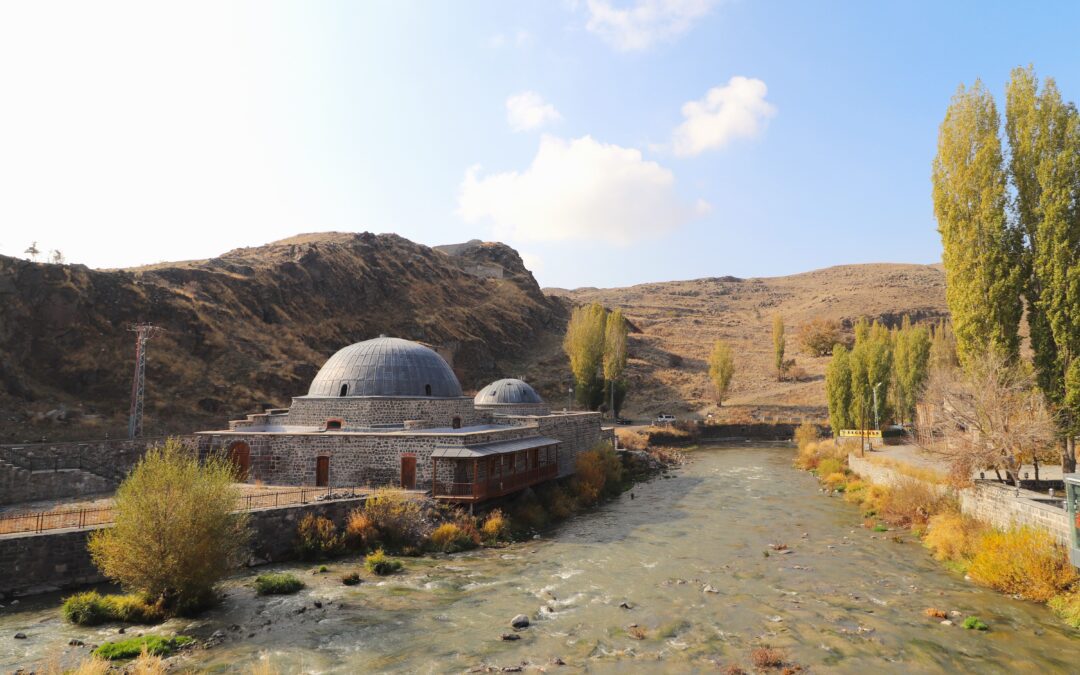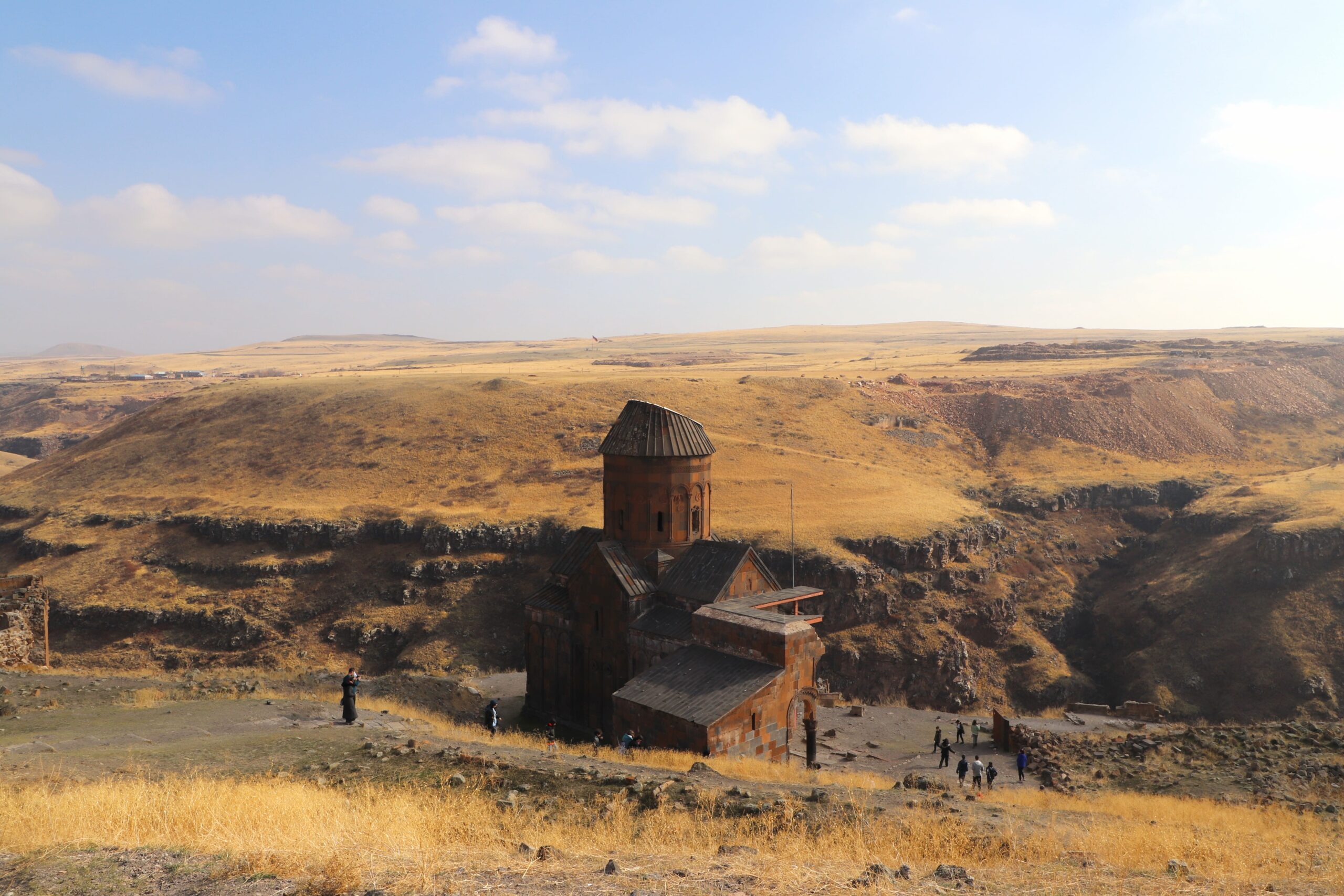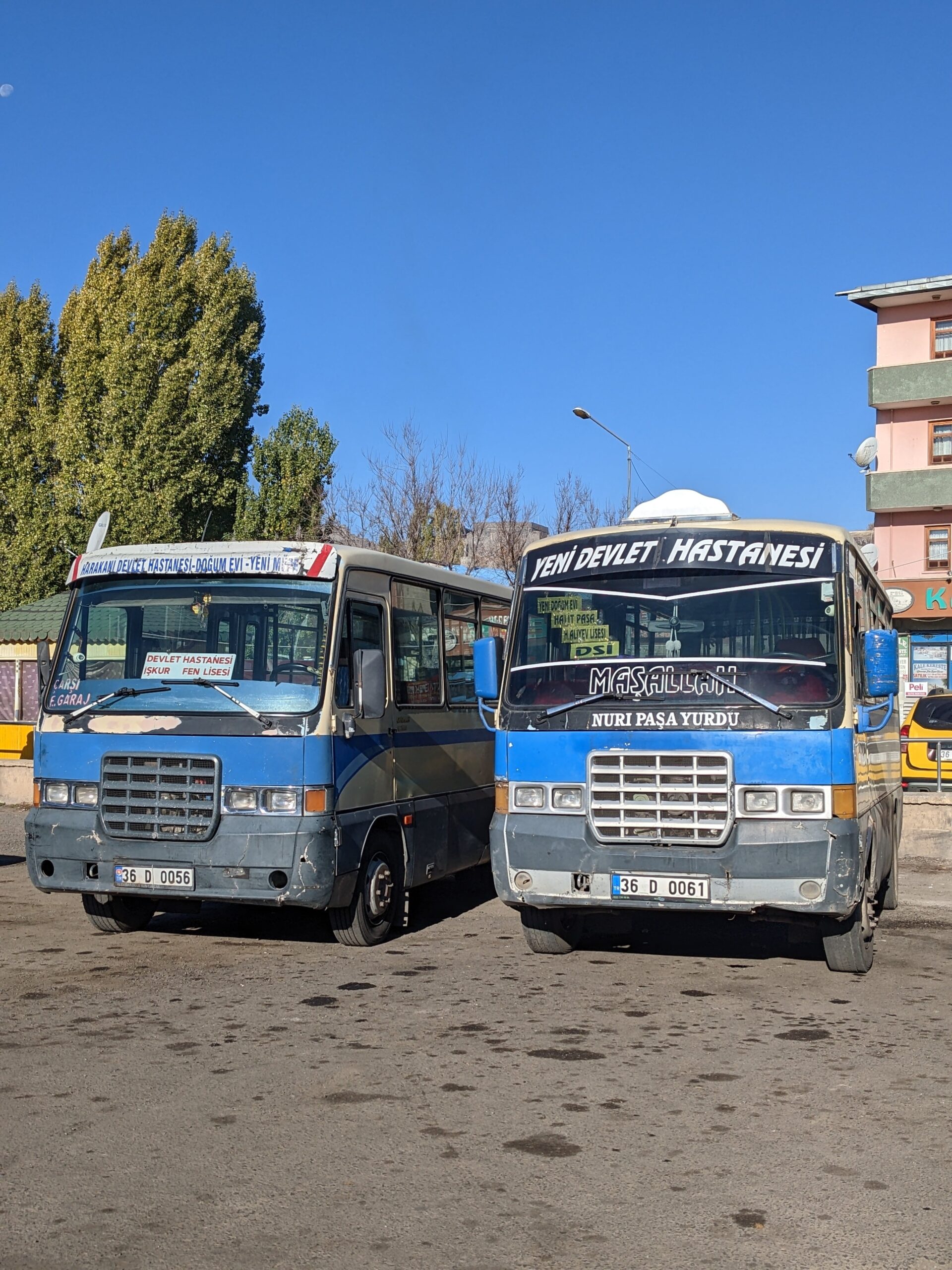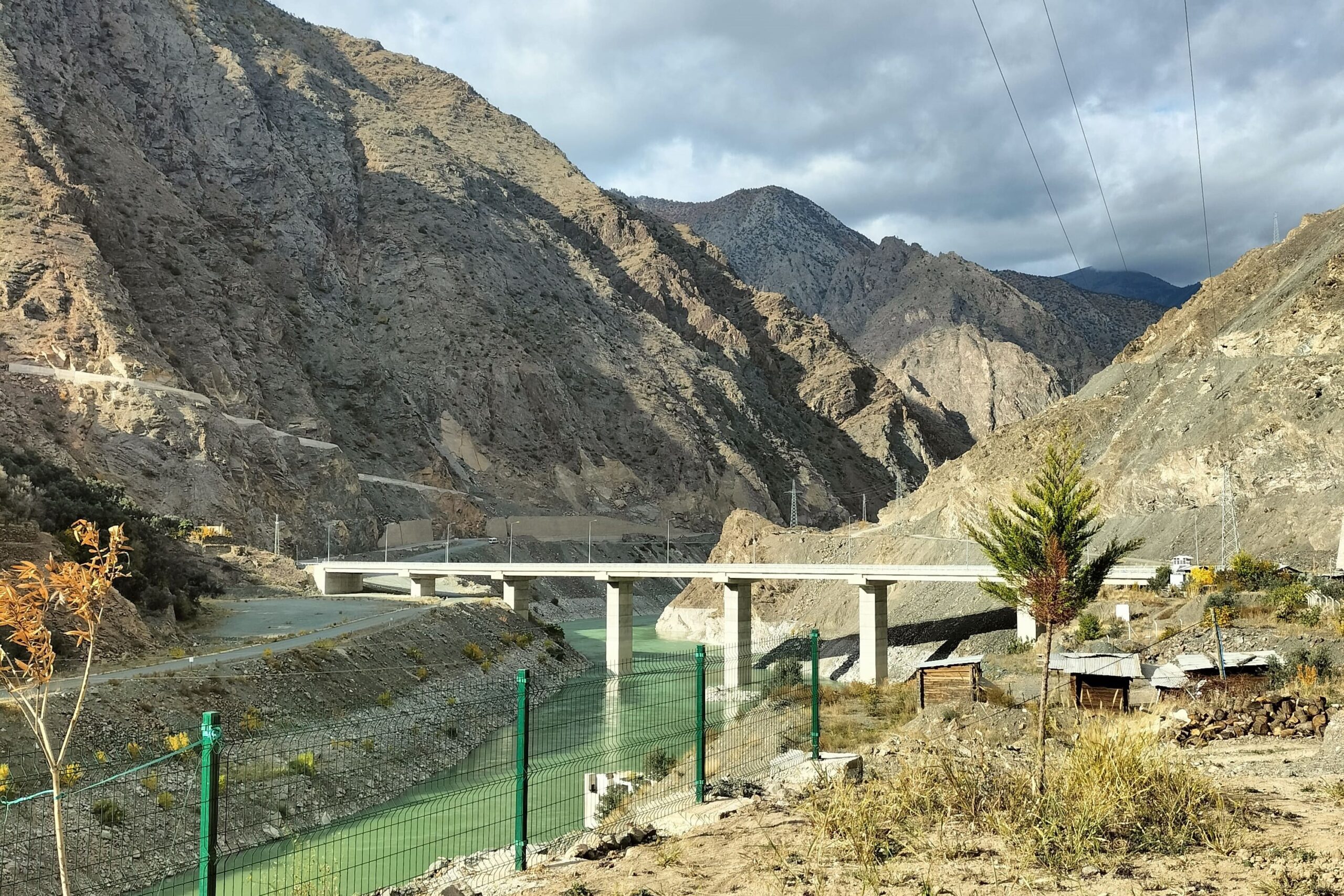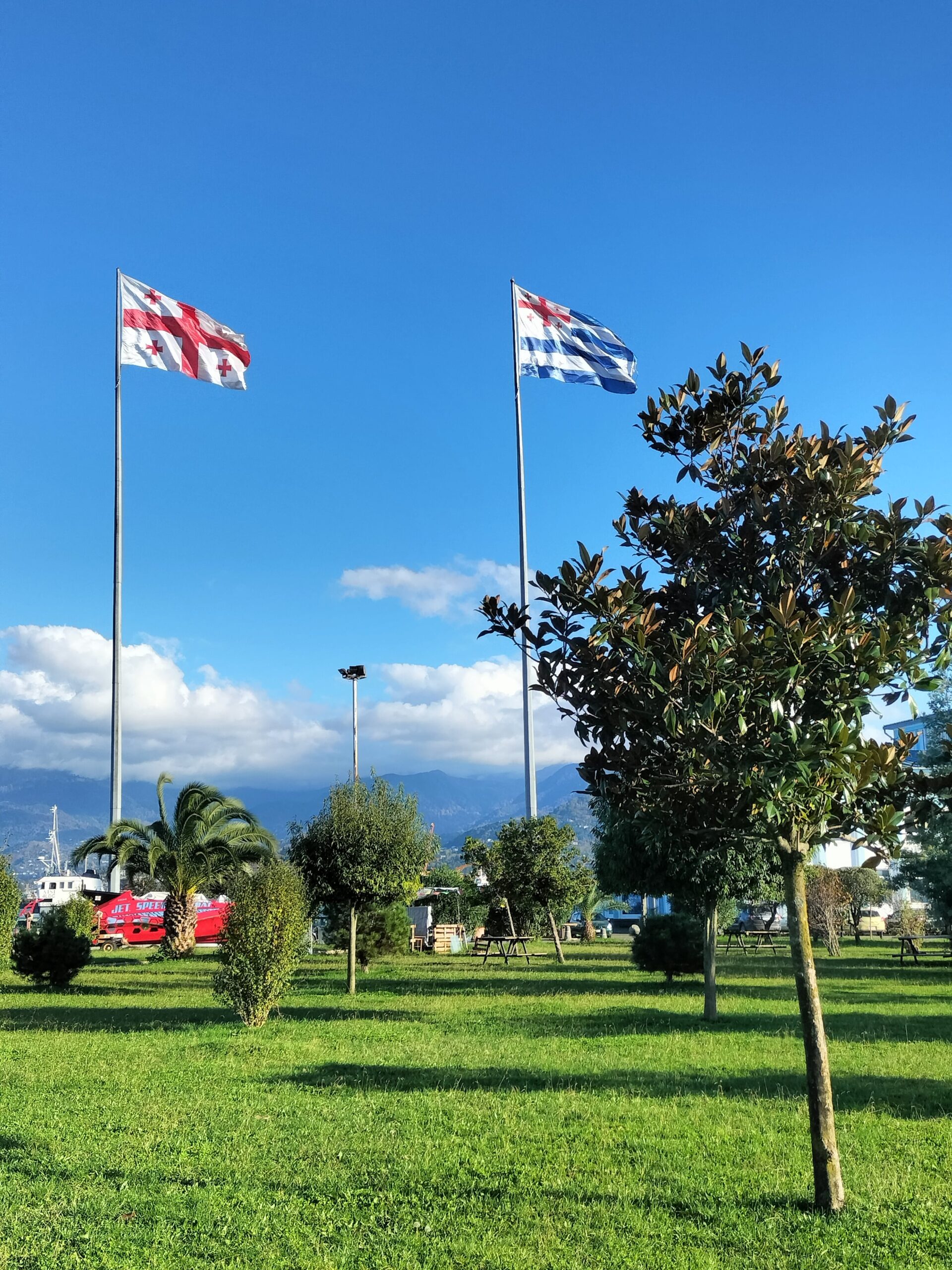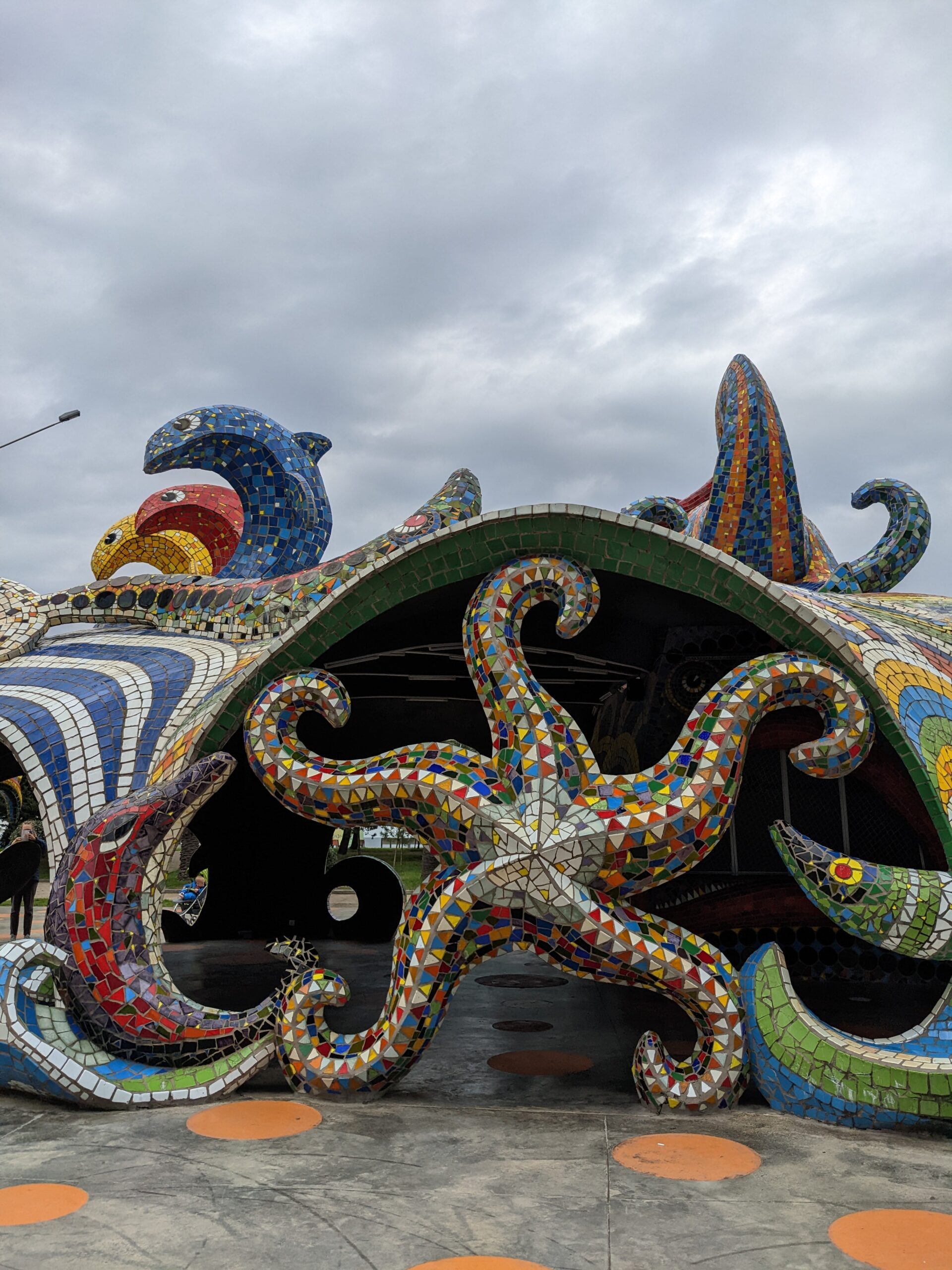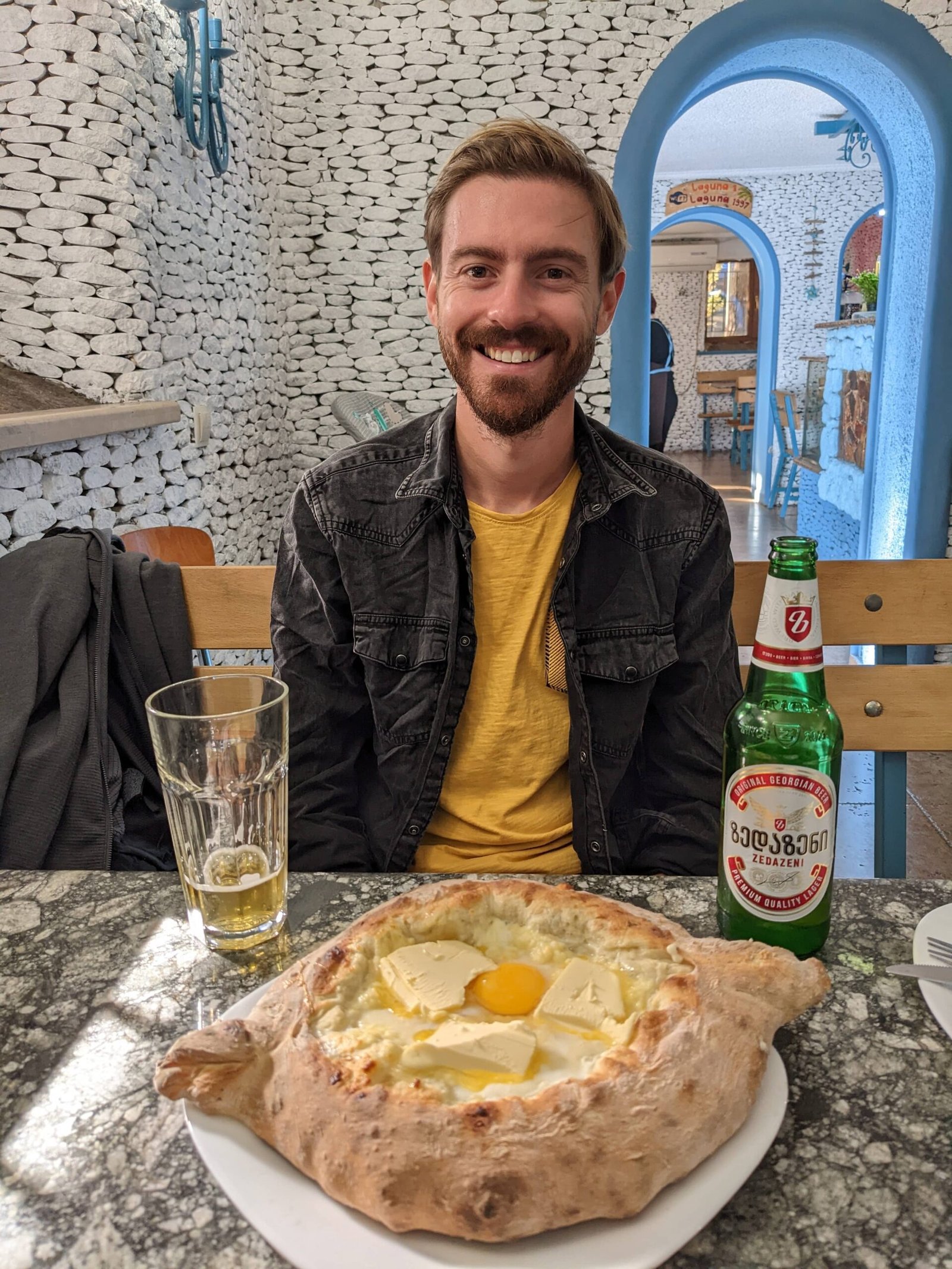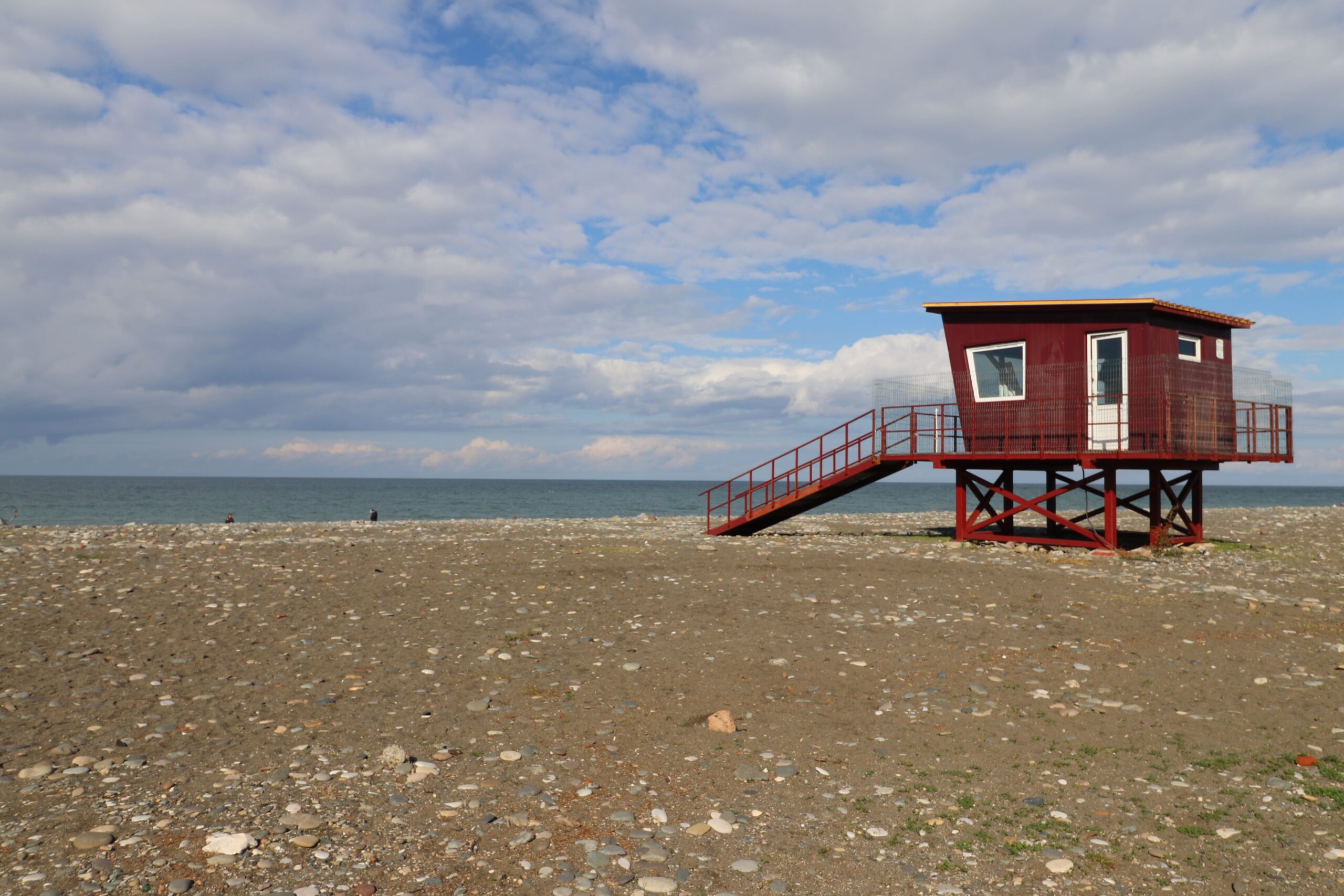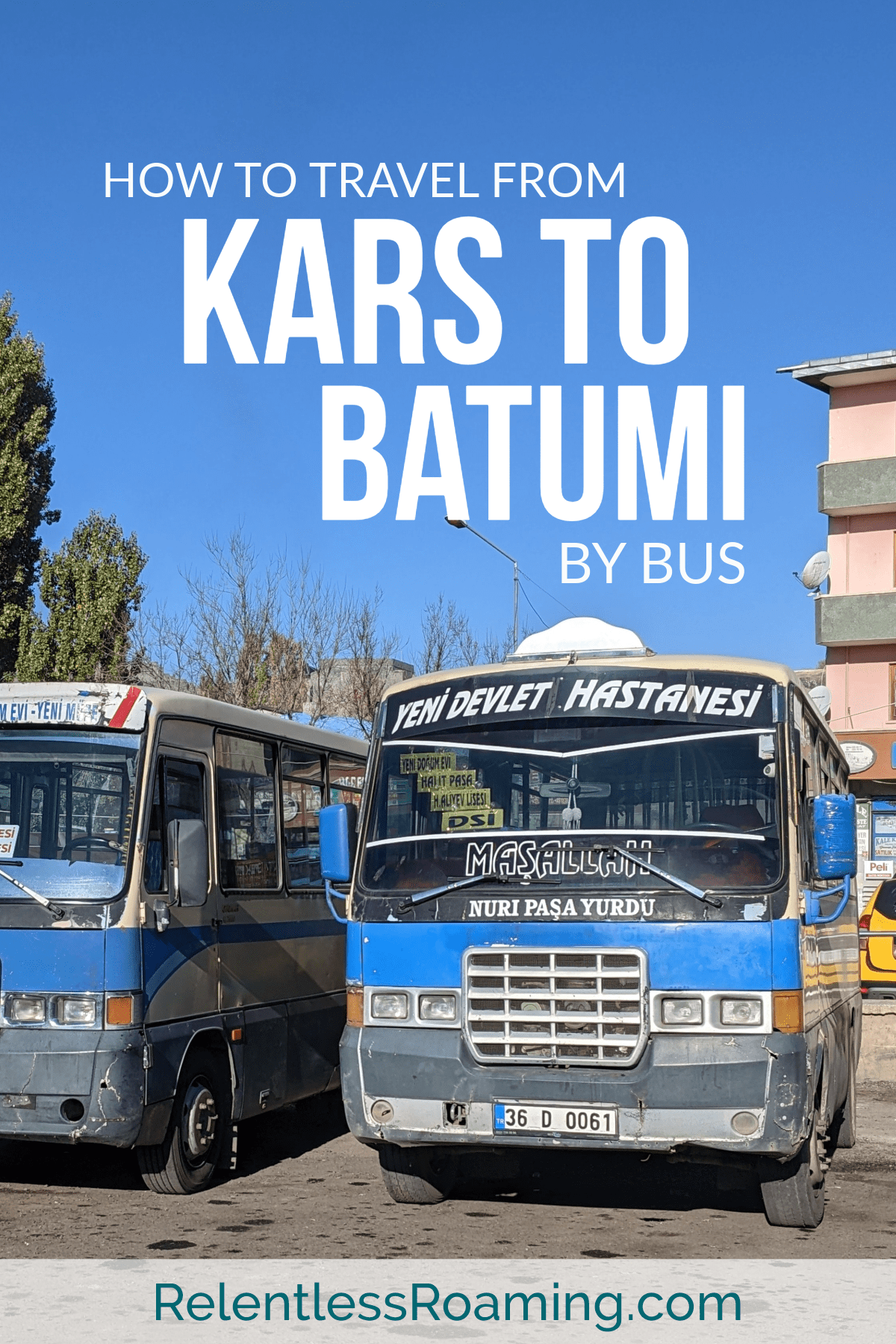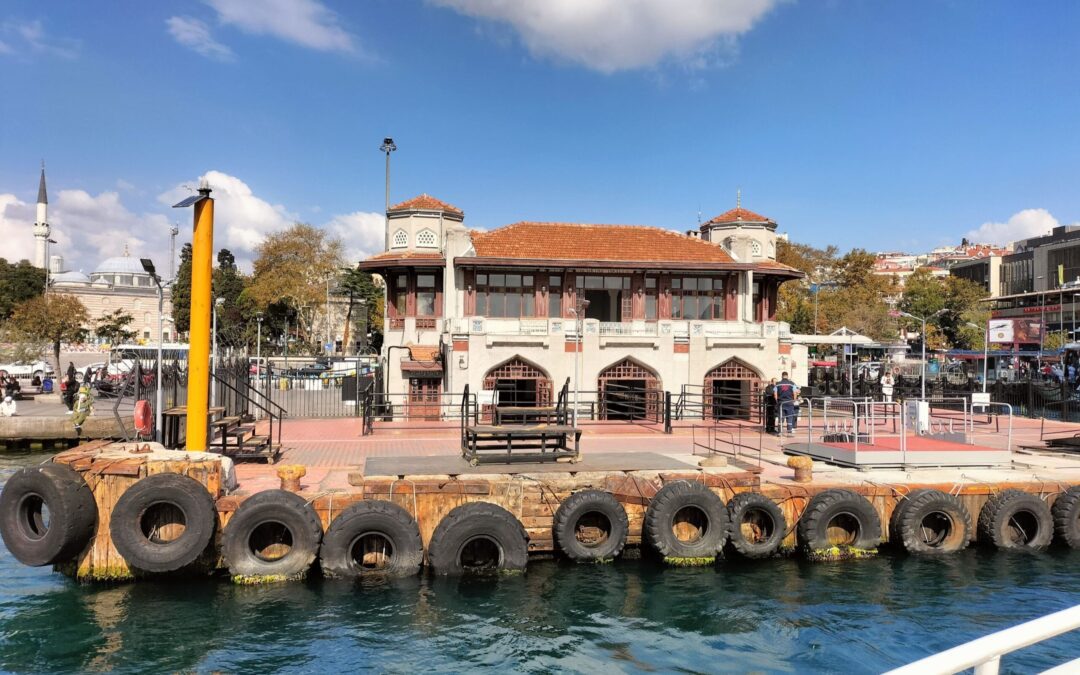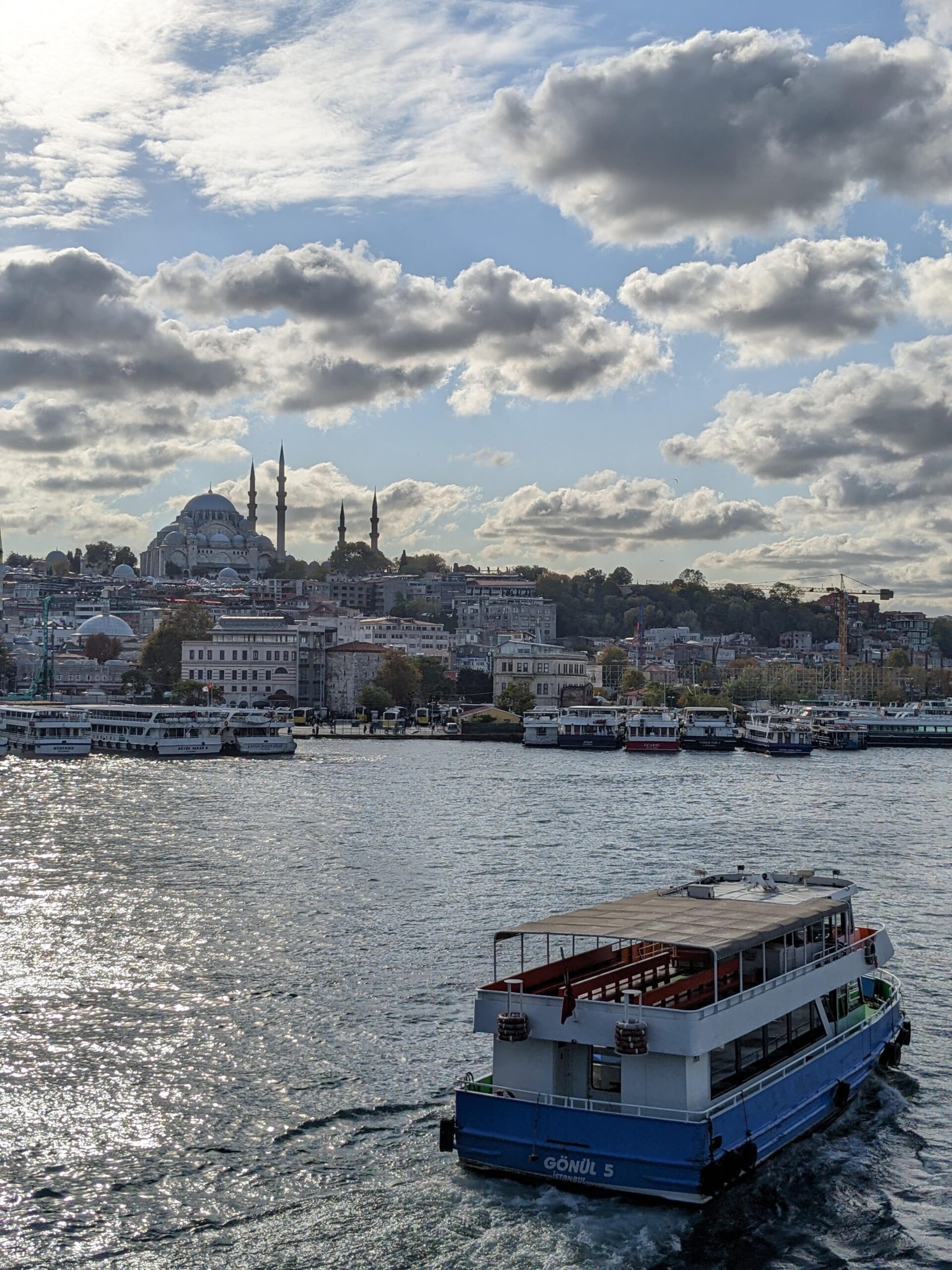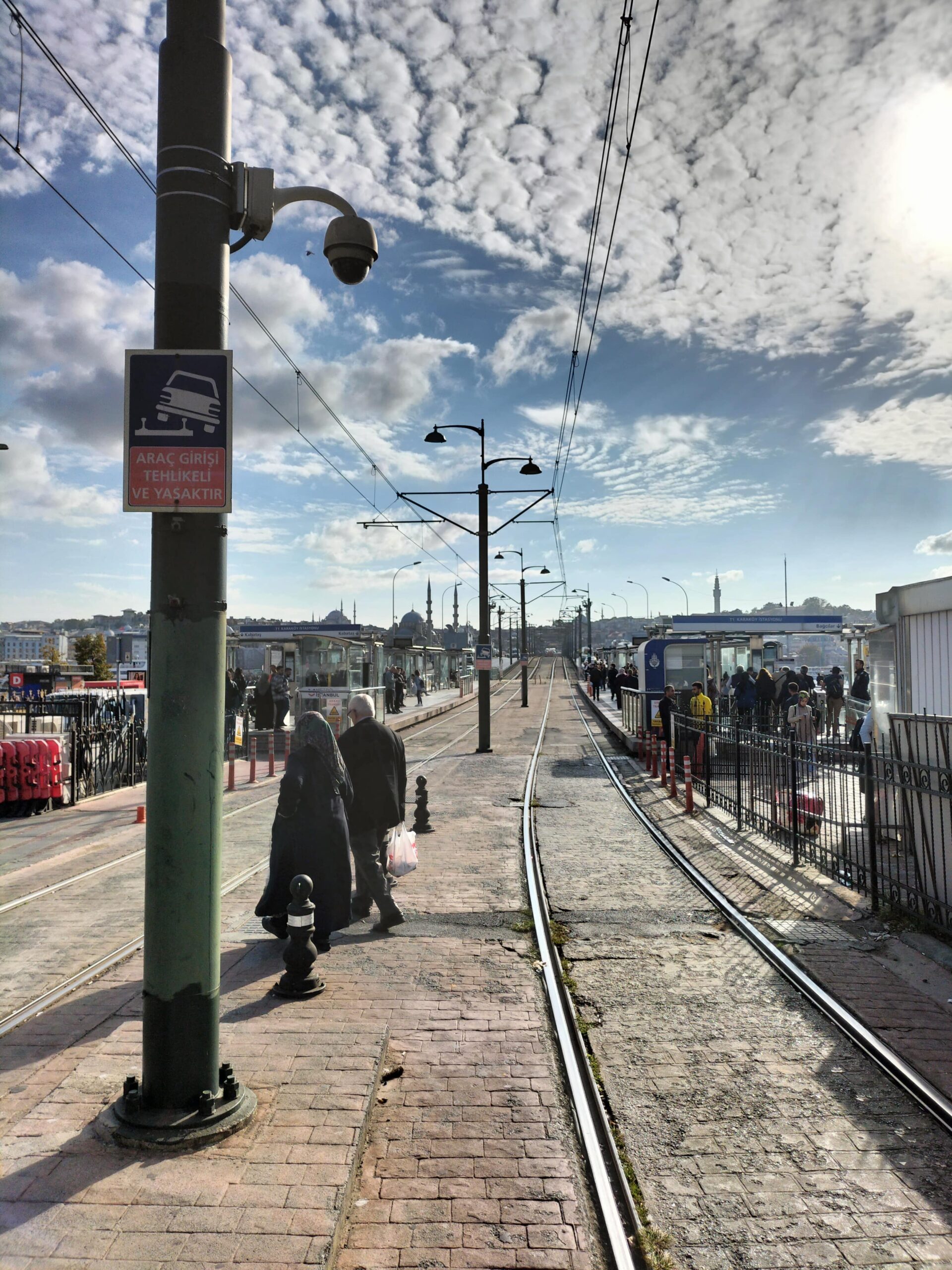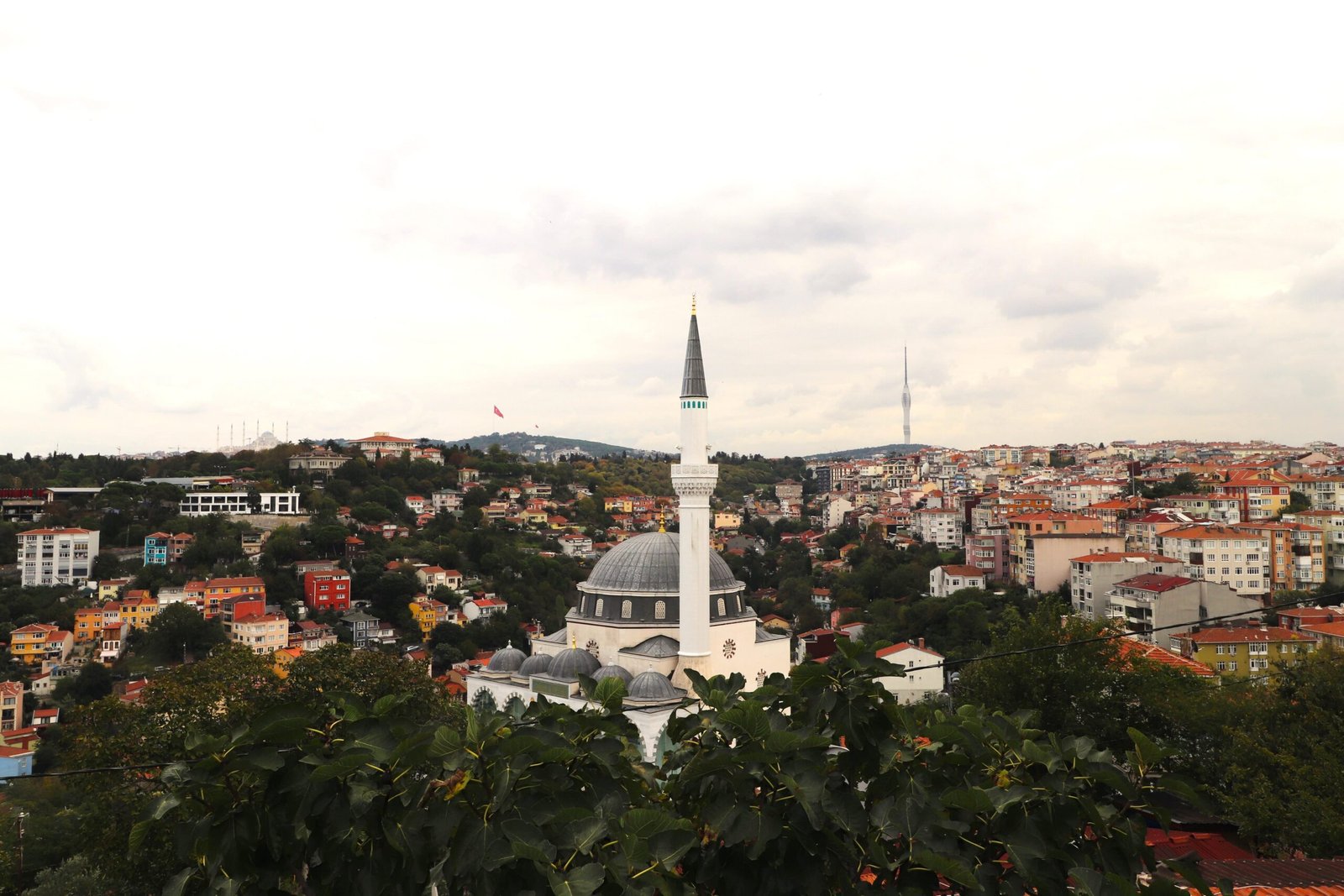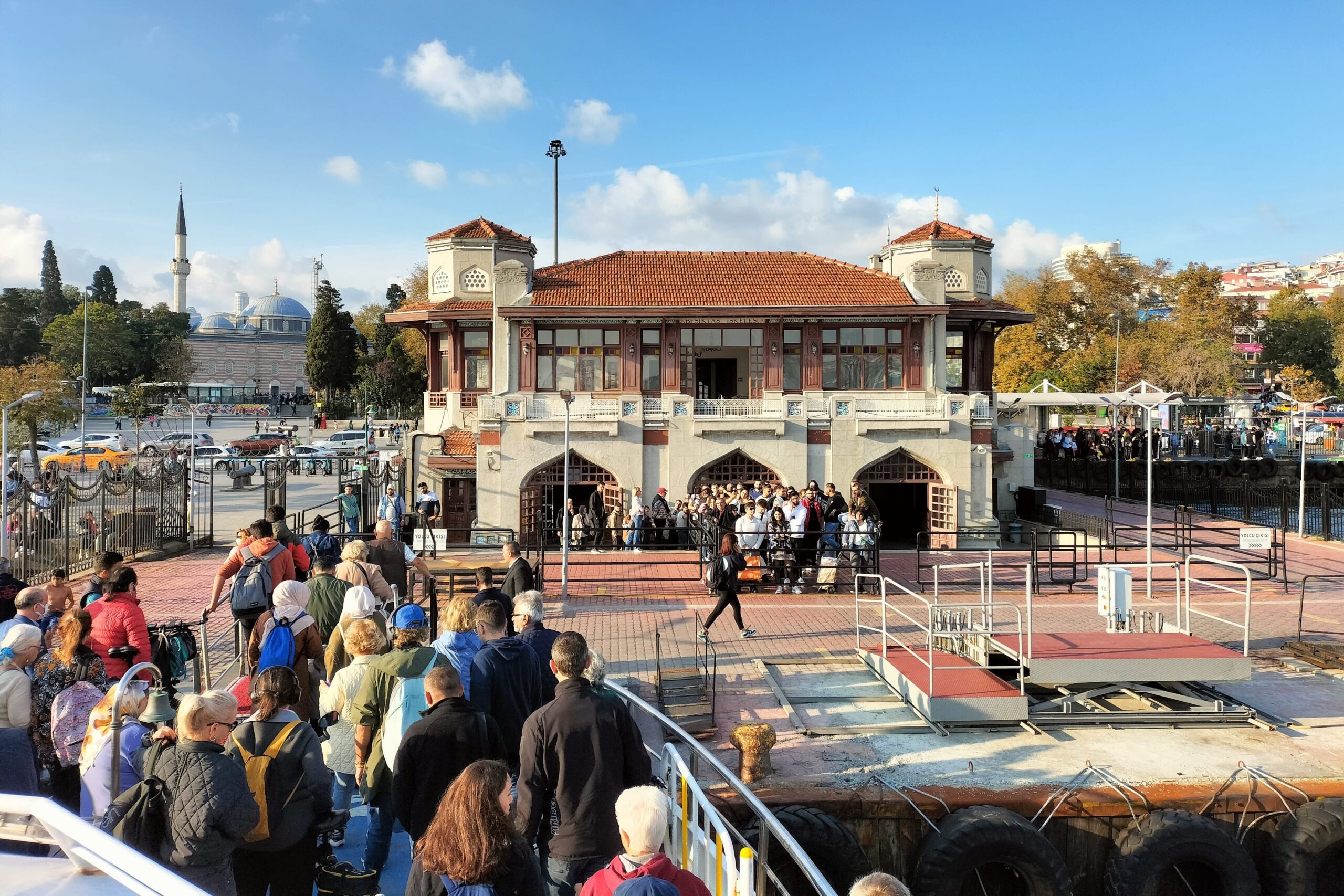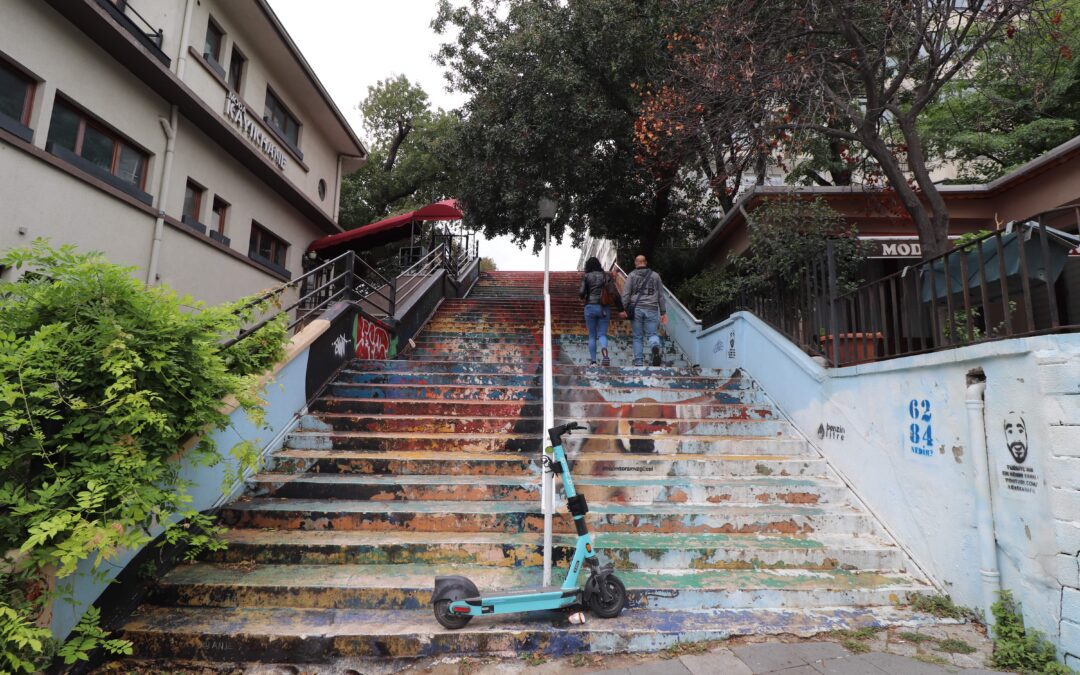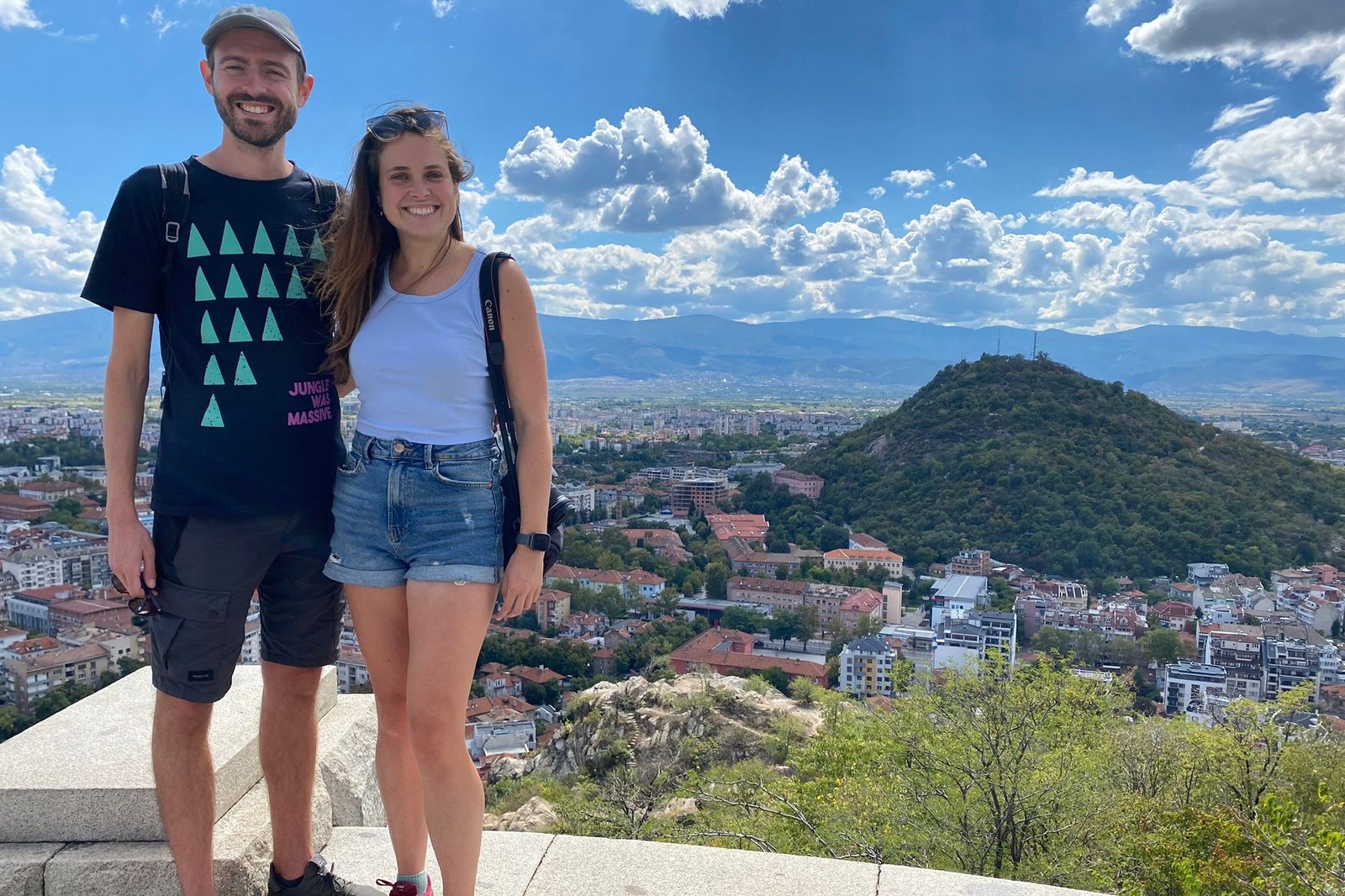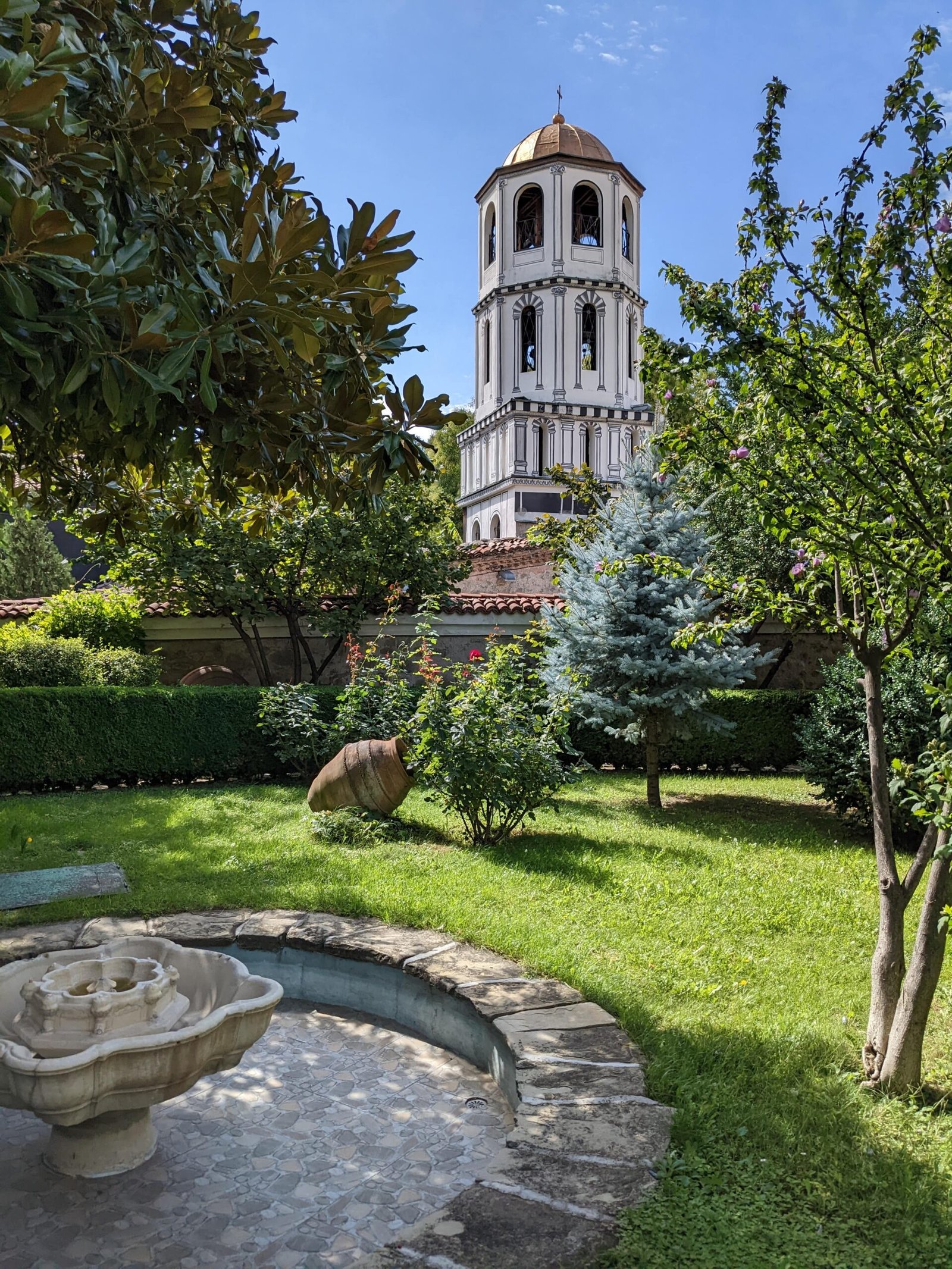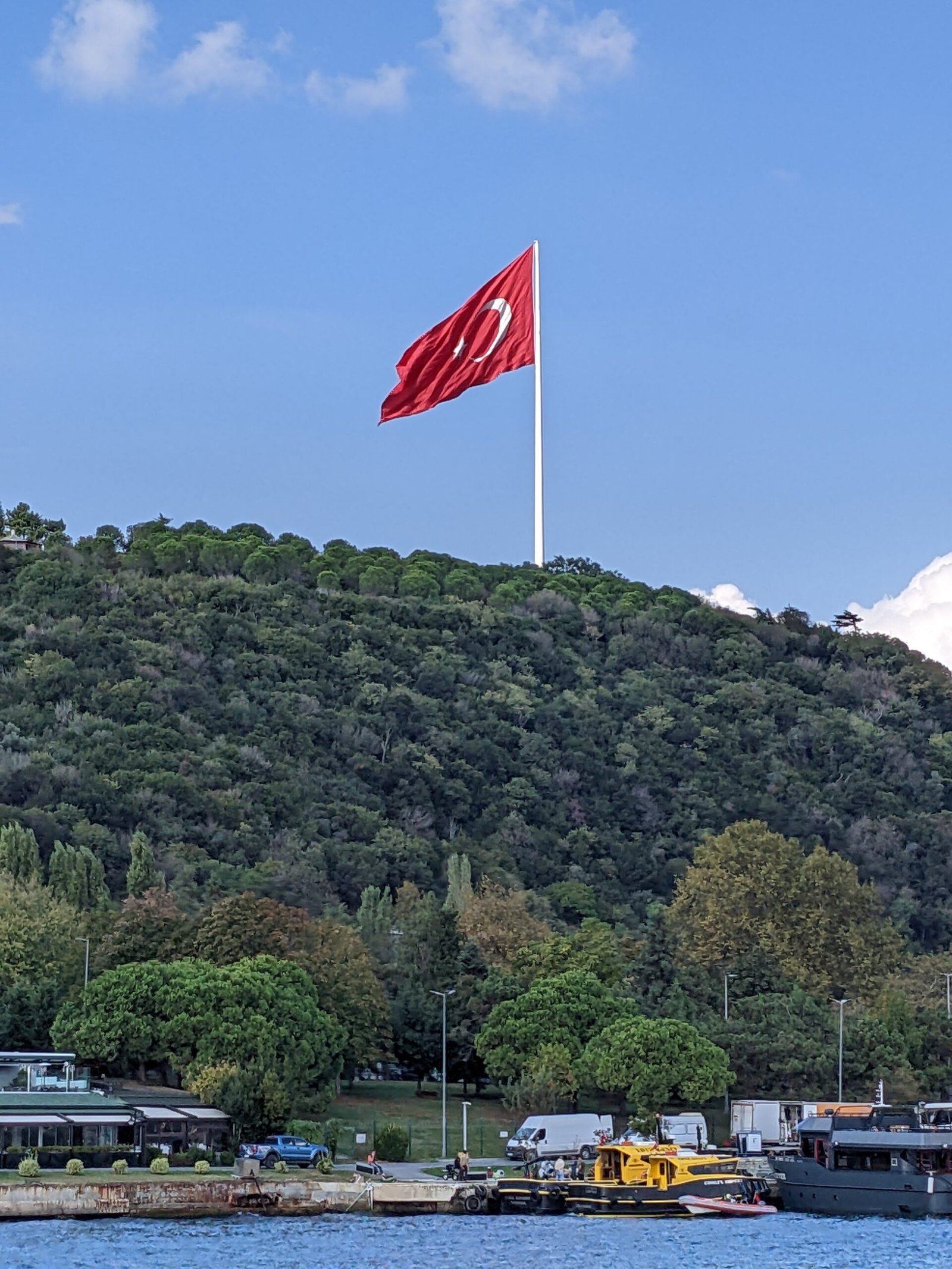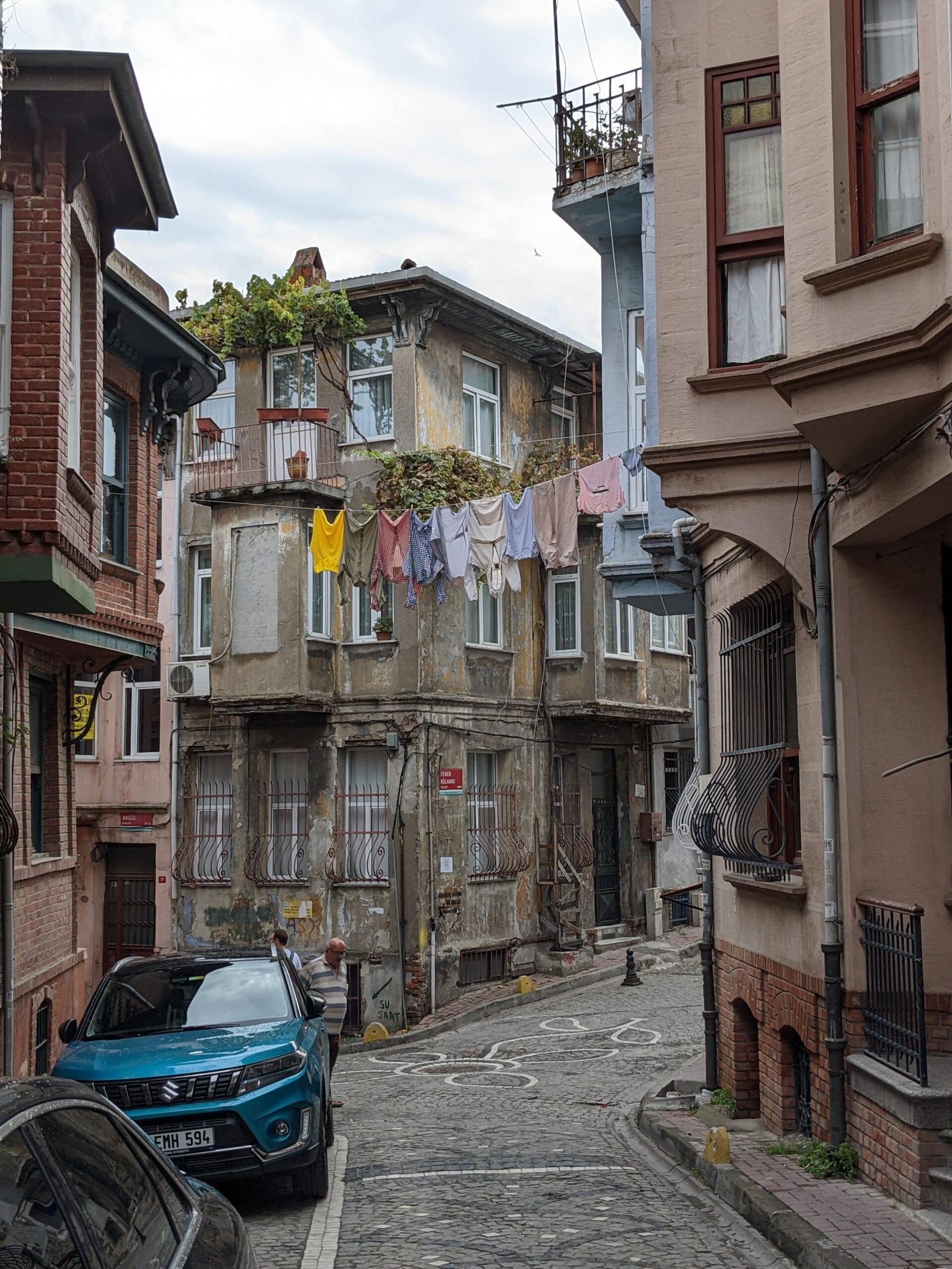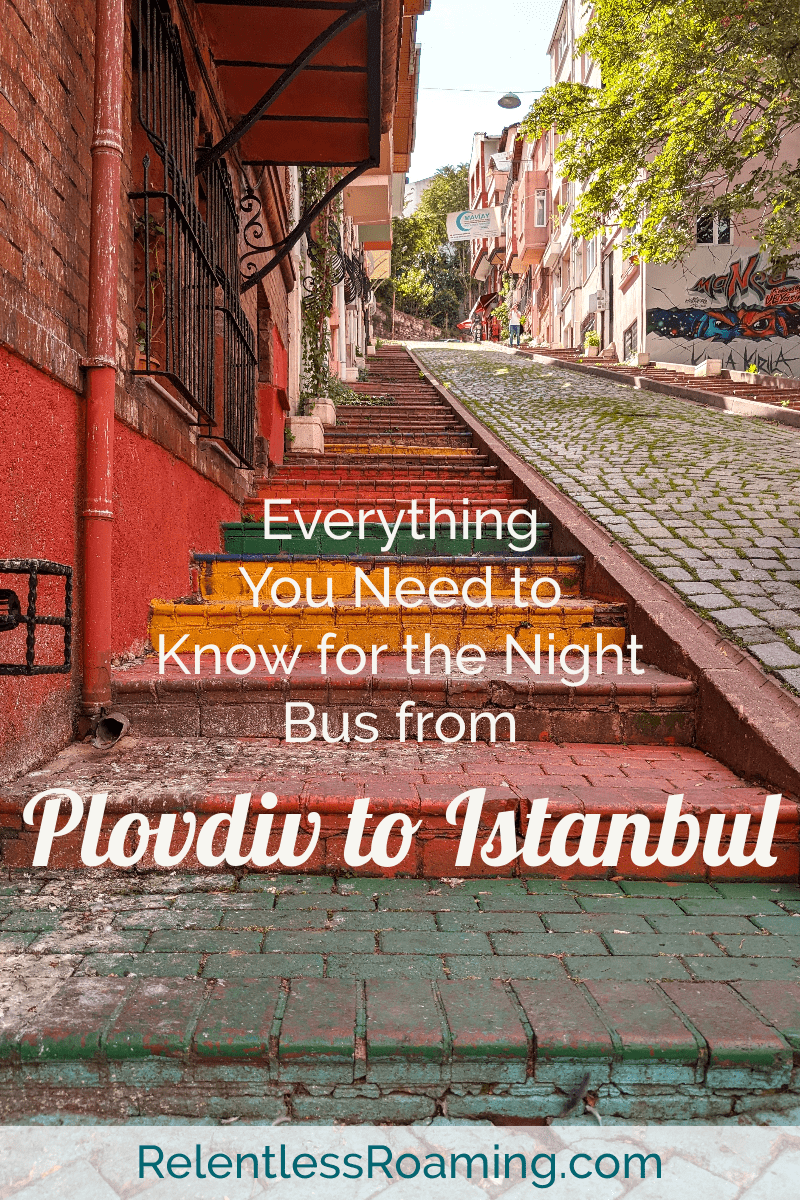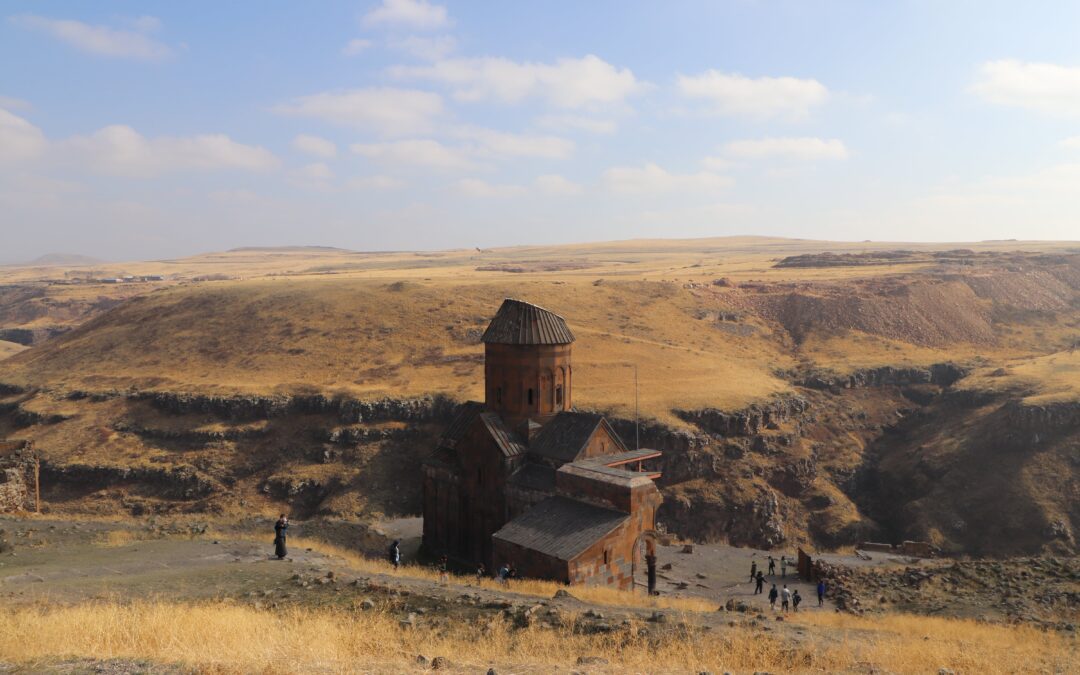
How to Visit Ani: the Ancient Armenian City
How to Visit Ani: the Ancient Armenian City
Ani, the medieval capital of Bagratid Armenia, now lays in ruins. The gorge created by the Akhurian river snakes its way beside the city and forms a natural border bringing the once Armenian city into modern day Turkey.
The tuff stone of some of the largest buildings still stand; the pink, orange and black hues of the bricks so characteristic of Armenia. Walk the gravel paths through the site, pop into the various buildings that remain, be amazed by the medieval artwork and inscription, stand in awe looking out over the gorge towards modern day Armenia. So close, but yet so far; the Armenian people lost one of their greatest symbols of pride with the change of borders. And, sadly, it seems that not enough is being done to keep the city alive.
This guide will give you all the info on how to visit Ani, a brief history and other things to do nearby.
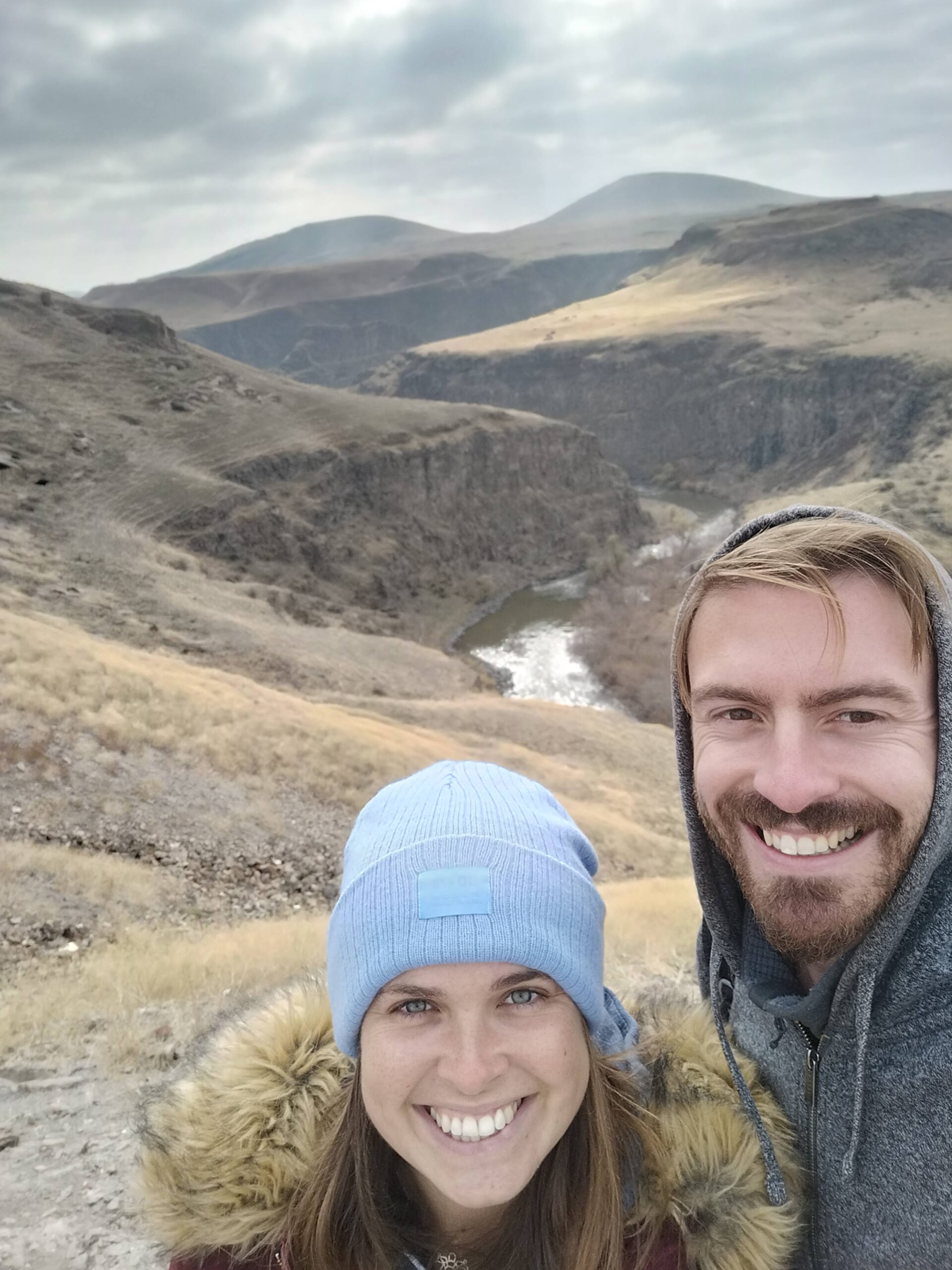
Disclaimer: This blog post may contain affiliate links. If you click and purchase through an affiliate link, we may earn a small commission at no extra cost to you! This just helps us to continue creating blog posts. We will only ever recommend products and services that we have tried and loved ourselves.
How to Visit Ani: the Ancient Armenian City
A Brief History of Ani
Ani was the capital of the Bagratid Armenian kingdom which comprised of modern day Armenia plus modern day Eastern Turkey. The city thrived due to its location along a trade route, and during its time, it was one of the world’s largest cities.
Ani was invaded on many occasions. Seljuk Turks captured the city and slaughtered its population; followed by subsequent invasions by the Kingdom of Georgia and Mongols.
A devastating earthquake hit the region in the 14th century which caused significant damage from which Ani never really recovered. This combined with a change in trade route away from Ani, and the takeover of the Ottoman Empire resulted in the city being completely abandoned by the middle of the 18th century.
Ani was then incorporated into the Russian Empire. The city was looted and damaged by Turks in 1918. Archaeologists managed to rescue some artifacts before the ransacking.
Soon after, the Soviet Union invaded Armenia, and the treaty of Kars was signed determining the borders of Turkey and the three Caucasian Soviet republics – Georgia, Armenia and Azerbaijan. Ani was not given back to Armenia, and has remained in Turkish territory since.
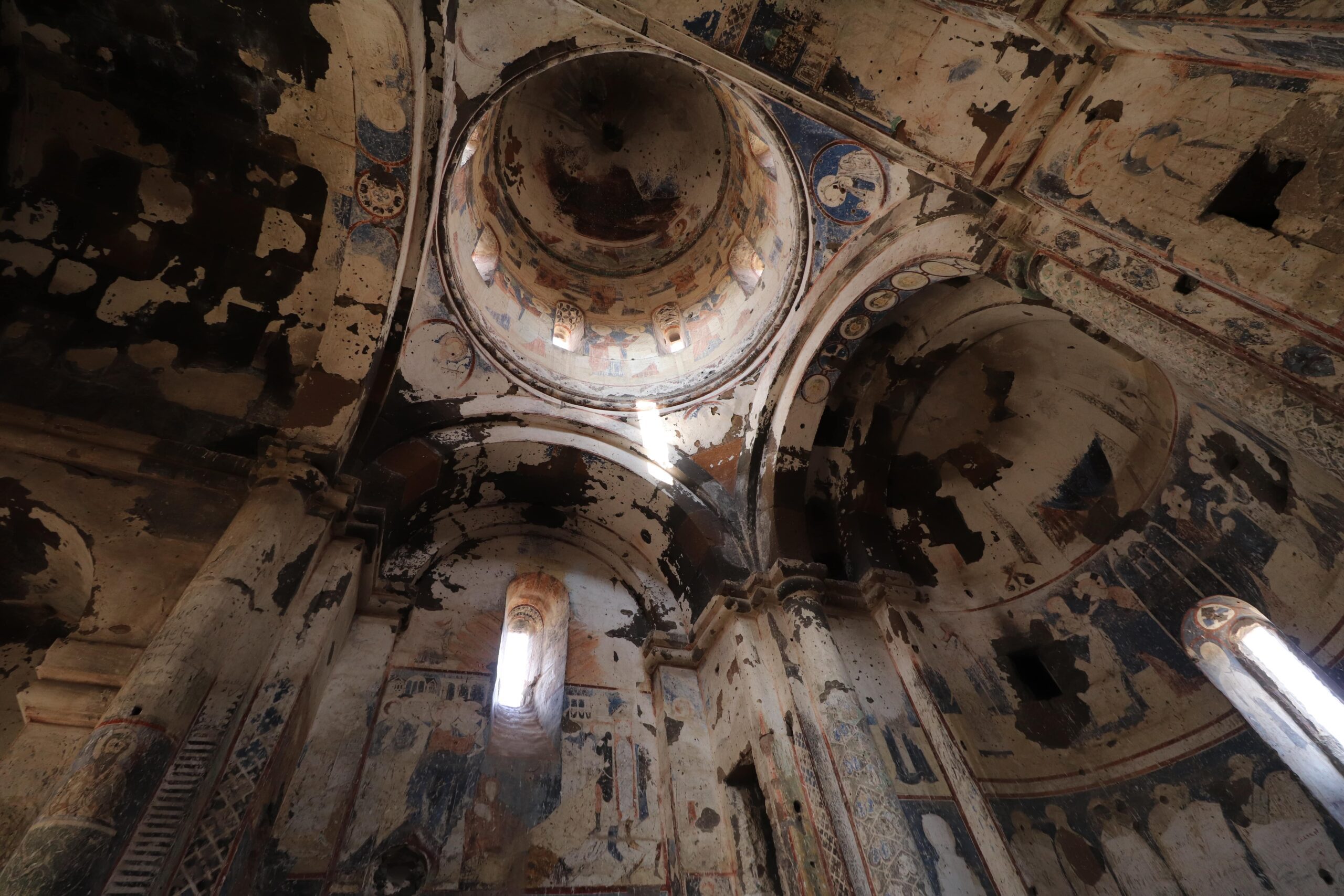
Planning Your Trip?
These are our favourite resources that we use religiously for planning our travels at home and while on the road. Use them for your trip planning too!
Accommodation: for the best deals, we use Booking.com, and Agoda.com. And what’s even better is that you build up loyalty points the more you book, which gets you exclusive offers like extra discounts, free breakfast, free room upgrades, and cashback!
Transport: For buses and trains, we swear by BusBud, and 12Go Asia.
For flights, we find them on Skyscanner and make sure to book through Trip.com because you can rack up points which turn into credit on your account, and sometimes free lounge access.
Travel Insurance: THE best budget-friendly insurance SafetyWing – no question.
SIM Cards/Tickets/Experience: Klook is the way to go!
How to Visit Ani
Getting to Ani
The first step is to get yourself to Kars.
Kars is the nearest city and has an airport (KSY) that connects with Istanbul and Ankara.
There is also a train that travels from Ankara to Kars. We haven’t taken this train but you can see details at this link.
We took a bus from Van to Kars. Tickets cost 300 TL, and the journey took seven hours, leaving Van at 10:00. During this seven hour journey, the bus was stopped on six occasions: either at police checkpoints or being flagged down by police. Yes, you read that right. The bus was stopped basically every hour.
Police would come on to the bus, check our IDs and passports, take them off the bus to presumably run them through a system, and bring them back. The whole thing was pretty tedious, but no one on the bus ran into any issues with the authorities, and we were the only non-locals.
We bought our tickets through ‘Best Van’, but the bus company that actually drove the route was called Turgutreis. Once you arrive into Kars, there is a free shuttle bus that will take you from the bus station into the city centre. Give the driver a shout when you want to get off.
To get from Kars to Ani, you will need to catch the 10:00 bus from just outside of Sugar Beet Cafe. Head over here, pay 20 TL each way for your ticket in cash on the bus. The journey lasts about an hour. The bus waits around and then returns back to Kars, leaving Ani at 13:30.
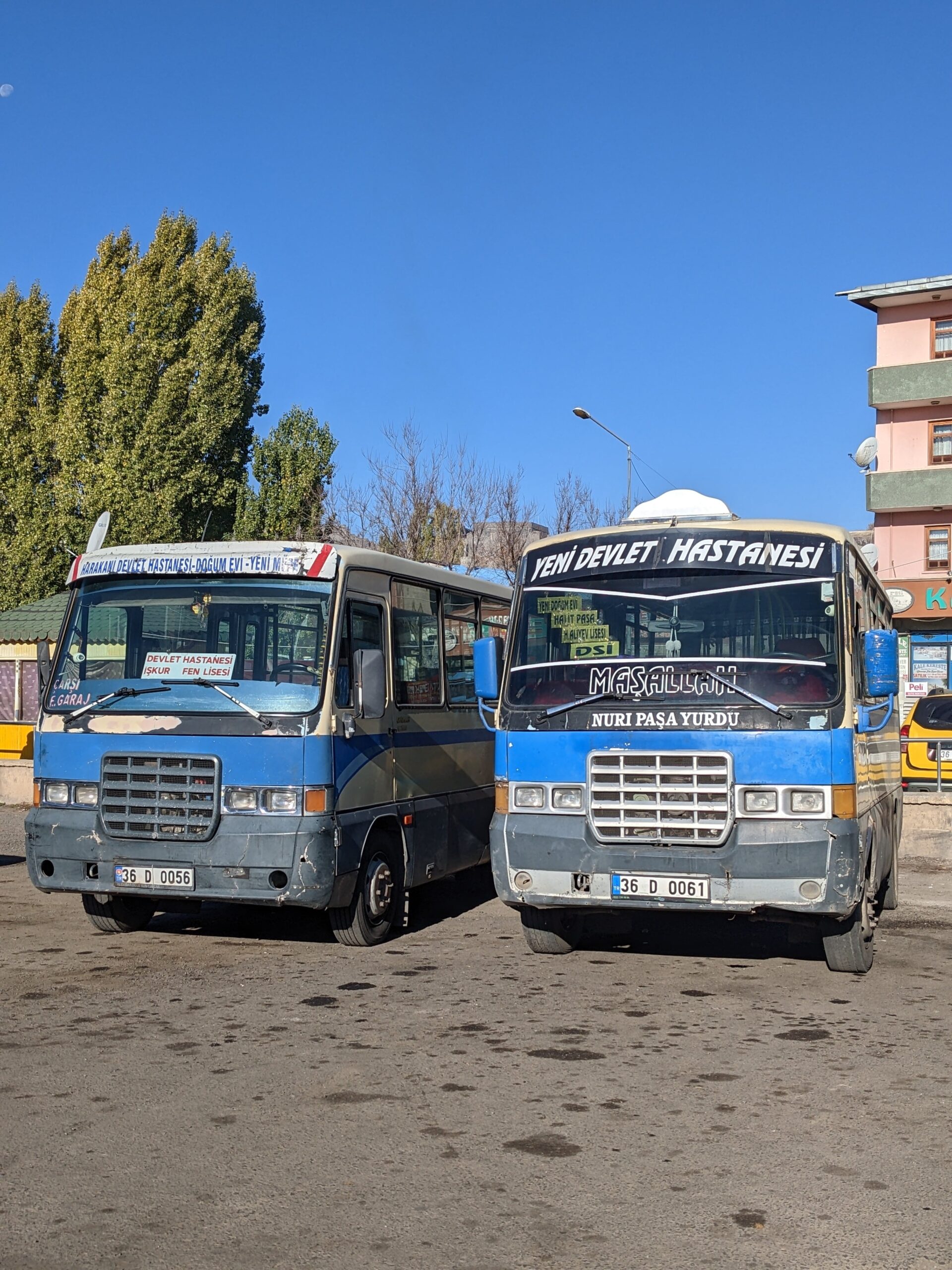
How Long Do I Need to Explore Ani?
By getting the bus to and from Ani from Kars, you have two and a half hours to explore the site. And we found that this really worked out to be the perfect amount of time. We didn’t feel rushed, and even had a little time to buy postcards, a magnet, and slowly sip a cup of cay in the winter sunshine.
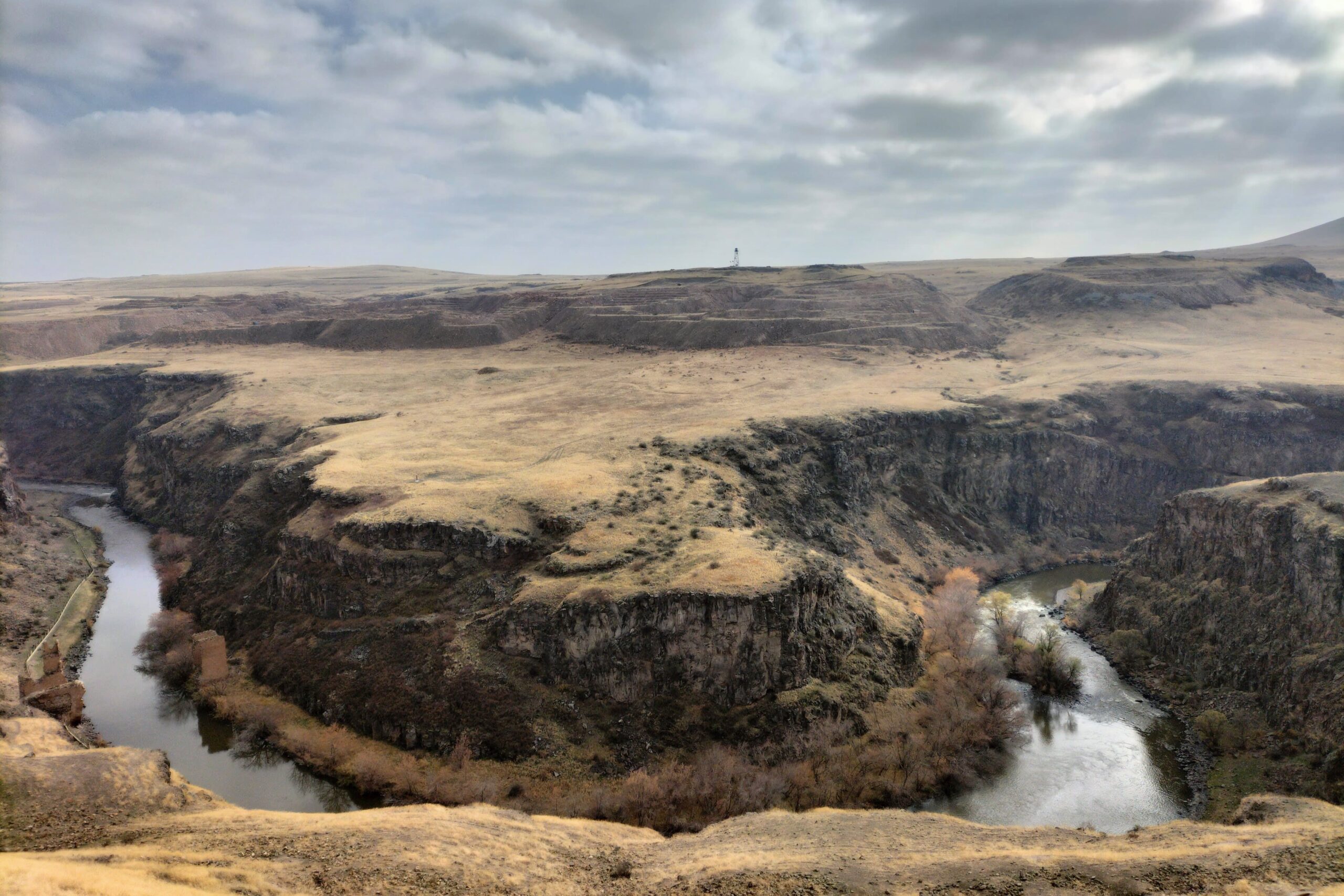
Do I Need a Guide?
Maybe. When we arrived, there weren’t any guides working. We had, however, met an Iraqi Kurd on the bus who seemed to know a lot about Ani and was talking us through bits and pieces. There are a few plaques around the site with information, however, they are very lacking. I feel like so much more could be done to bring this site back to life, and tell Ani’s story!
I made sure that I did plenty of research before and after visiting to get a good grasp of the city’s prominence. Tours could be arranged in Kars to provide you with better insight.
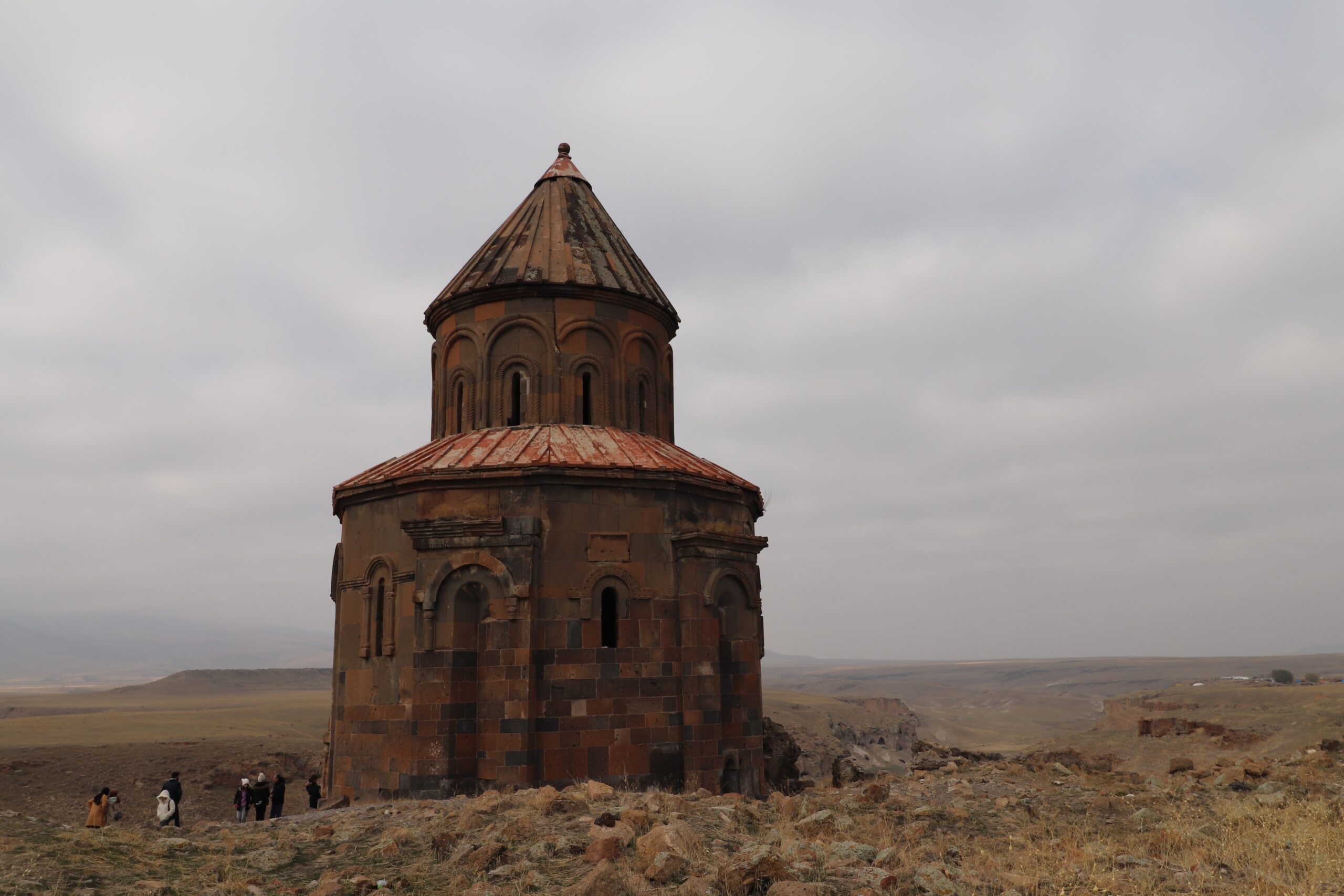
Entrance Requirements
As of December 23, the entrance fee is 180 TL. There is no need to buy your ticket in advance as this site is very much off the tourist trail and doesn’t receive hordes of visitors. Up until quite recently, Ani was a heavily monitored city, requiring visitors to apply for permits. Nowadays, you can just walk in without issues as long as you have your passport with you. (We missed this memo and did not take our passports with us! Luckily, there weren’t many people visiting and the police let us enter anyway.) Entry is free with the Turkey Museum Pass.
Ani’s Hotspots
This is the route that we took around Ani. It took us around in a loop so we didn’t end up doubling back on ourselves, except when heading up to the citadel (but that’s unavoidable). Also, we found that the views and buildings were progressively more impressive in this order leaving the best til last.
– City walls
– Spot the cave dwellings on the other side of the gorge
– The characteristic black and orange checkerboard brickwork of Ani Palace

– The collapsed pillars of the Church of Saint Gregory Gagkashen
– Zoroastrian temple
– Church of the Holy Apostles
– The phenomenally preserved Armenian inscription on the walls of the Church of Saint Gregory of the Abughamrents. This is one of the iconic buildings of Ani as it is still largely in tact in comparison to the others.

– The minaret and view over the gorge from Manuchihr Mosque. Make sure you walk around the outside of the mosque to get amazing views over the gorge looking over to Armenia. Spot the remnants of the Old Silk Road Bridge that crossed the gorge.
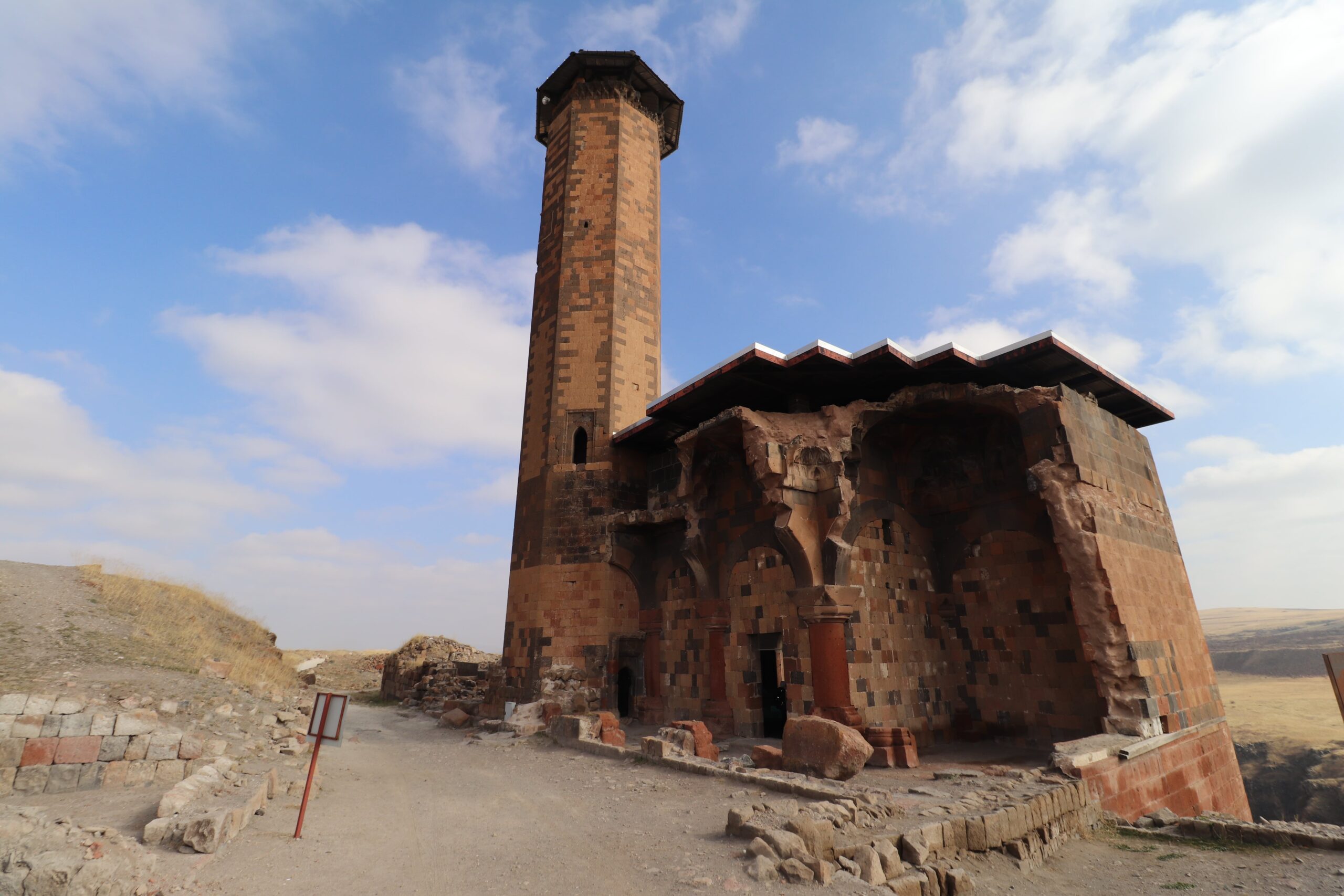
– Climb the hill and over the rubble of the Citadel for views of the Maiden’s Castle on what looks like an island/peninsula that extends out into the gorge. The castle, unfortunately, is out of bounds.
– Make your way back towards the entrance, stopping to venture into Ani Cathedral. This is one of the largest standing structures on the site. Walk through and out the other side to see star shaped brickwork and khachkars carved into the brick.
– See the Church of the Redeemer which almost looks as though it has been cut in half. When we were there, there was so much scaffolding, that we could barely see the building. (Fingers crossed that that means restoration is going ahead!
– And the absolute best til last: The Church of St Gregory of Tigran Honents. Admire the artwork above the entrance way and the ancient inscription on the outside of the building before heading inside and being wowed by the floor to ceiling artwork.
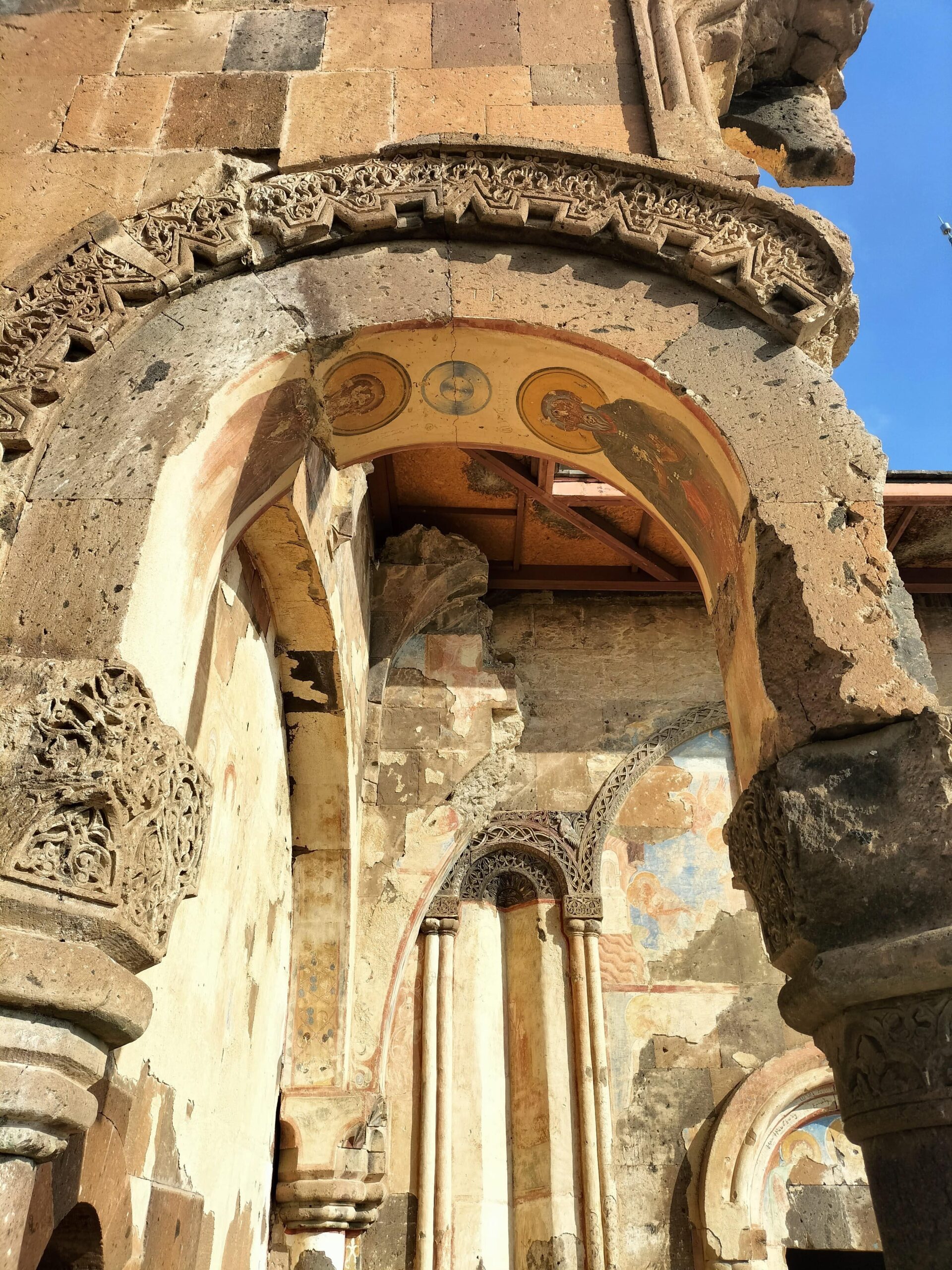
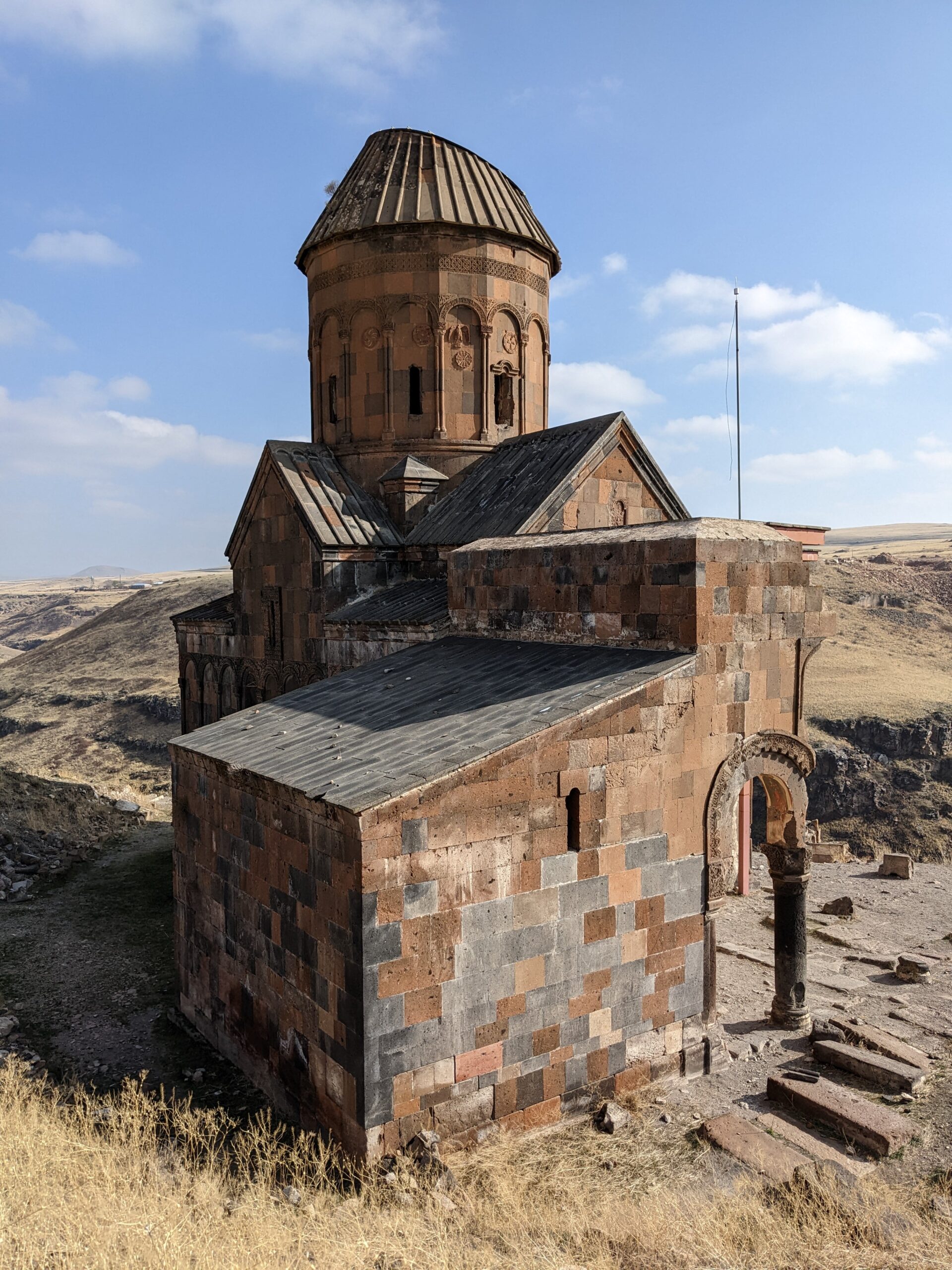
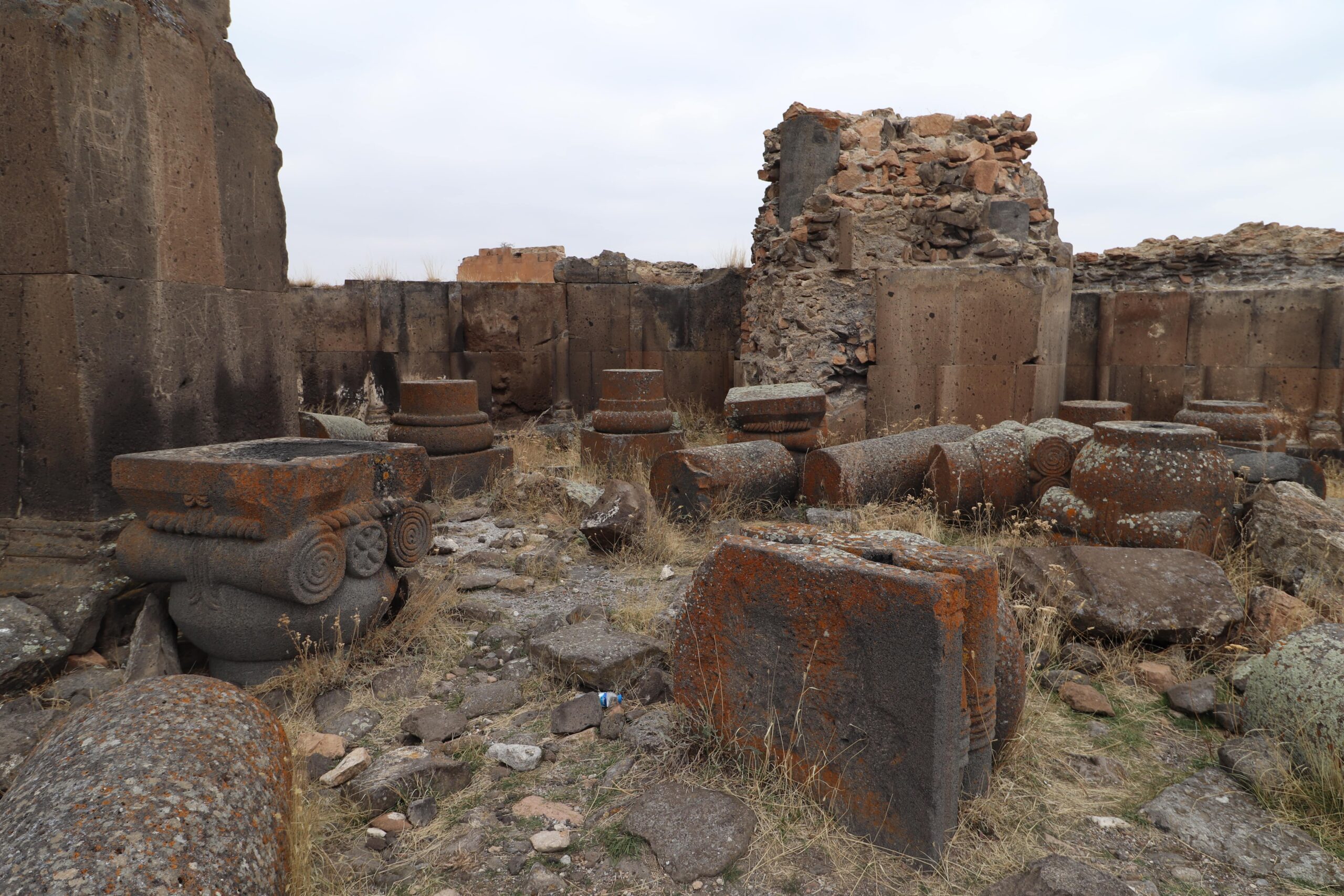
Facilities at Ani
There are toilets, a cafe serving drinks and snacks, and a souvenir shop.
Haven't bought your travel insurance yet?
Definitely buy travel insurance for all of your trips abroad. We have used SafetyWing for the last two years of backpacking, and we 100% recommend it, whether you are travelling for a couple of weeks, months, or years. And it is the most budget friendly, best value option out there!
Purchase your SafetyWing Travel Insurance here.
Top Tips for Visiting Ani
Bring your passport for smooth entry to the site.
Wear sturdy shoes. There is a huge amount of rubble and uneven paths.
Be prepared for the weather to be brutal. We went in November and it was really cold and windy: there are no shelters other than the cafe at the entrance. Equally, in summer you would be fully exposed.
Other Things to Do Nearby
After visiting Ani, head back to Kars, and do a little exploration here.
Wander up to Kars fortress for uninterrupted views over the city. Entrance is free.
Stop for coffee at Raskolnikov overlooking the river. This cafe/restaurant is built in an old hamam. (Check out this this blog post on Turkish coffee, so you know what to order.)
Have dinner at Kars Kazevi. We ordered the evelik (local green) and nettle soup which also had lentils and potatoes in. We then shared a plate of hangel which is squares of pasta served with a mound of yoghurt and caramelised onions on top. The meal is served with a plate of pickles and bread, and followed up with a cup of cay. (Take a look at this post on other Turkish vegetarian food to look out for on your Turkey adveture.) This was a really warm and comforting meal to finish off a very cold day of exploring the ruins of Ani.
Maybe head to Georgia next? Our next stop after Kars was Batumi in the Adjara region. Use this guide to find out how to make the journey.
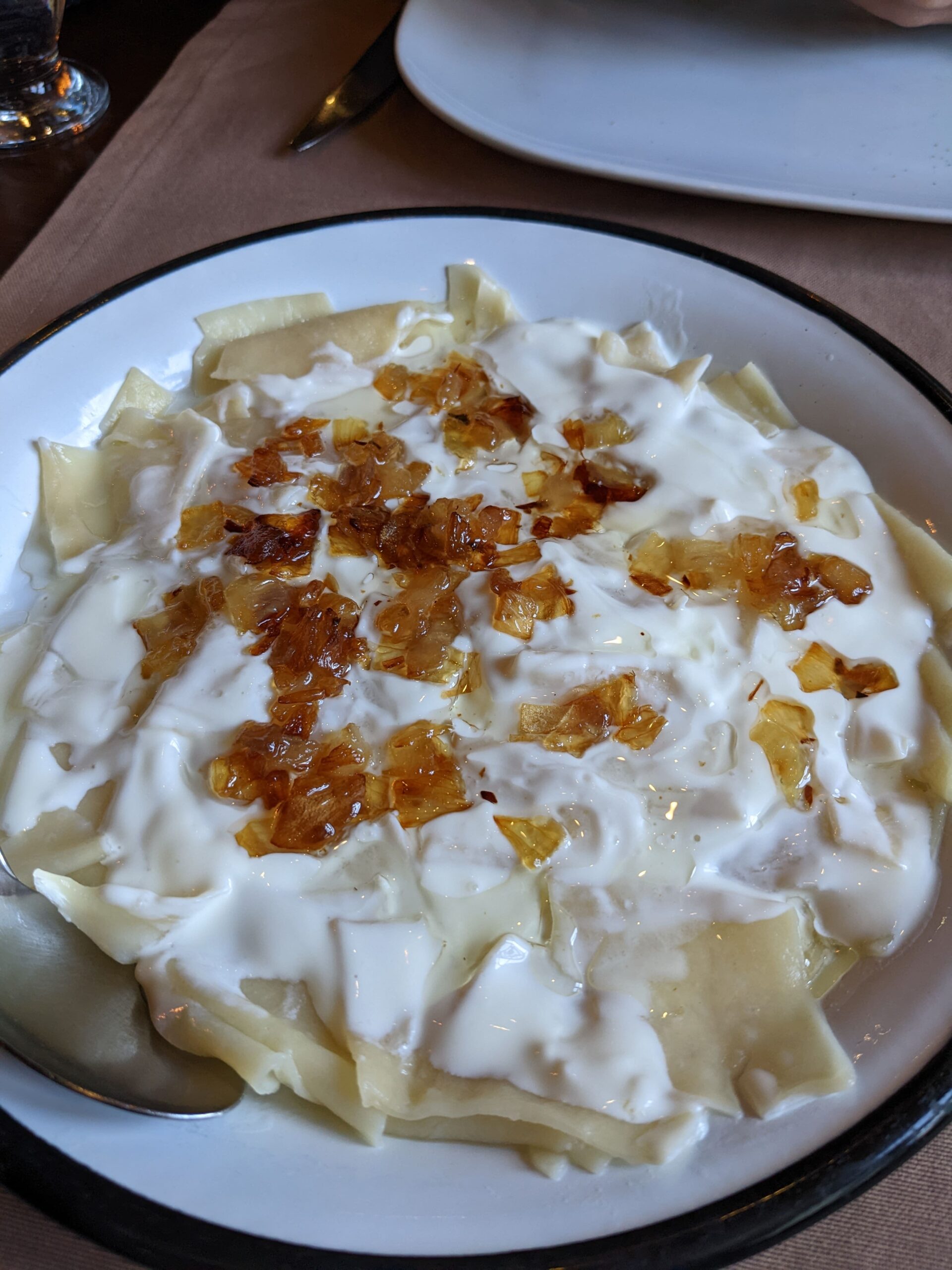
Do you have any questions on how to visit Ani? Are you planning a trip to Ani?
I’d love to hear your thoughts, recommendations and questions.
Thanks for reading!
Like it? Save it!




